45 Famous Landmarks in Portugal (100% worth a visit)
Portugal has been a leading destination for travelers from all over the world for many years, and for good reason: with its wonderful rocky beaches, medieval cities, amazing architectural monuments, wilderness landscapes, colorful fishing villages, and the kindness of the Portuguese people, it’s totally understandable that many have fallen in love with Portugal.
If you’re wondering what are the famous landmarks in Portugal, you’ve found the right post.
Here are 45 of the very best Portugal landmarks, man made and natural included! 🇵🇹
Full List of the 45 Famous Portugal Landmarks
To make it easier, we’ve divided the famous landmarks of Portugal into 2 categories: the monuments first, and then the natural landmarks.
Below find out our selection of the top 30 landmarks by category, and 15 more for the bravest readers!
🏛 Famous monuments in Portugal:
- Belem Tower
- Jeronimos Monastery
- Castelo de São Jorge
- 25 de Abril Bridge
- Cristo Rei Statue (Sanctuary of Christ the King)
- Pena Palace
- Castelo dos Mouros
- Quinta da Regaleira
- Dom Luis Bridge
- Livraria Lello
- Bom Jesus do Monte
- Historic Village of Monsanto
- Castelo de Guimarães
- Coimbra University
- Óbidos Castle
- Roman Temple
🌊 Natural landmarks in Portugal:
- Benagil Cave
- Ponta da Piedade
- Marinha Beach
- Cabo de São Vicente
- Douro Valley
- Praia da Costa Nova
- Cabo da Roca
- Boca do Inferno
- Peneda-Gerês National Park
- Sete Cidades
- Mount Pico
- Poço da Ribeira do Ferreiro
- Pico Ruivo
- Porto Moniz Natural Swimming Pools
🔎 More landmarks:
- Santa Justa Lift
- Monument to the Discoveries
- Praça do Comércio
- Carmo Convent
- Queluz National Palace
- Park and Palace of Monserrate
- Mafra National Palace
- Porto Cathedral
- São Bento Station
- Chapel of Souls
- Jardim do Morro
- Fortress São João Baptista
- Alcobaça Monastery
- Nazaré Beach
- Batalha Monastery
So, here’s the complete list of the famous landmarks Portugal has to offer. To learn more about each of these landmarks, keep reading below! 👇
Famous Monuments in Portugal
Portugal has a very long and rich history and as such, as many monuments on its soil including castles, fortresses, churches, and more.
Let’s discover 16 of the best Portugal monuments!
1. Belem Tower
The Belem Tower is a must-see when visiting Lisbon and the emblem of the city. It’s arguably the most famous landmark in Portugal, you can’t miss it when visiting Lisbon!
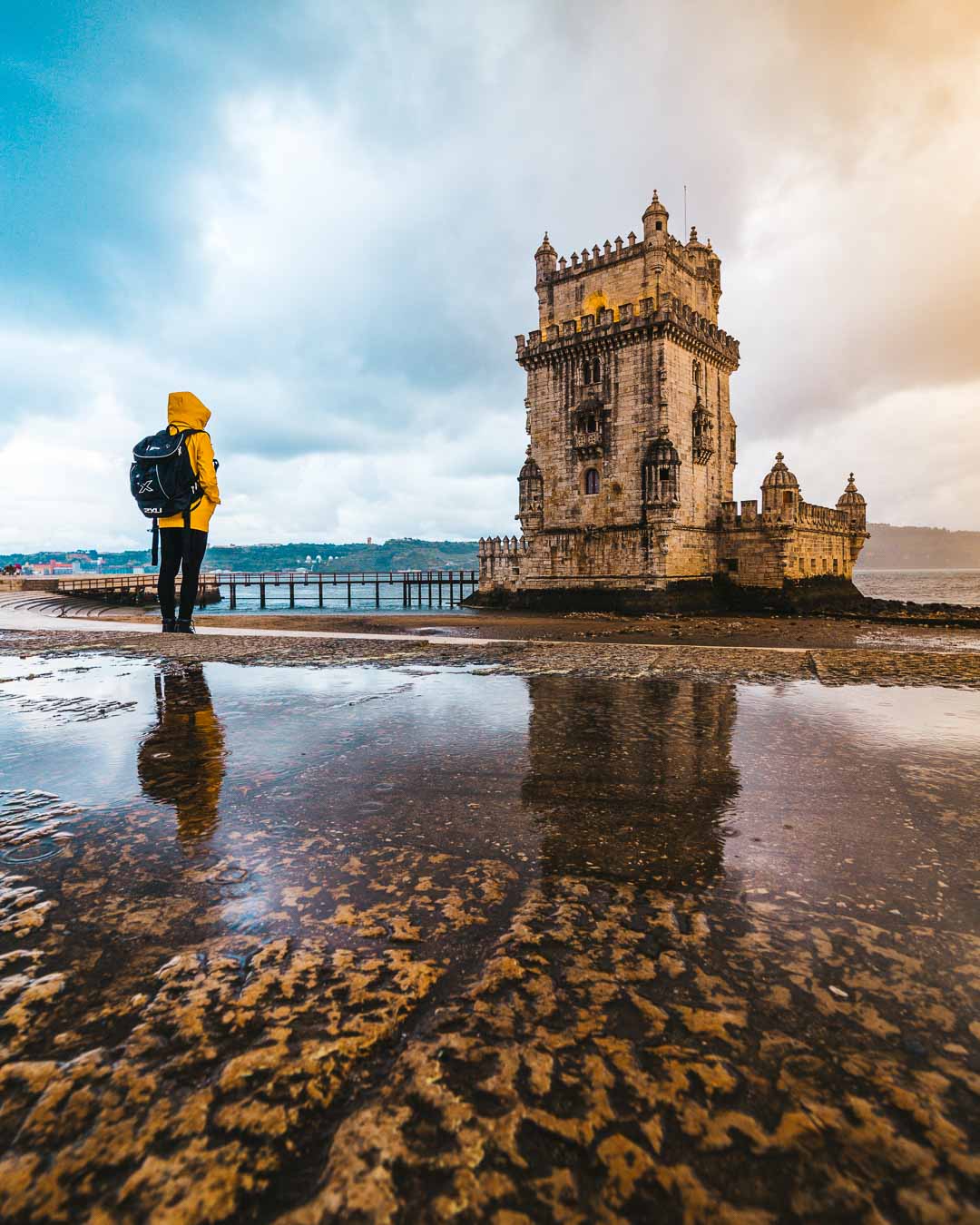
Listed as a UNESCO World Heritage Site since 1983, the Belem Tower was built between 1515 and 1521 to watch over the port of Lisbon and thus control the passage of ships. Rising at 30 meters high, this tower of Manueline architecture overlooks the surroundings, offering a breathtaking view of the Tagus River. Inside, you’ll be able to appreciate the beautiful balconies and ornaments carved in limestone, the turrets as well as the statue of Our Lady of Good Success.
It’s quite a touristy place and there are almost always people and long lines to visit the interior. That’s why I recommend you book your tickets as soon as you can!
2. Jeronimos Monastery
Located right next to the Belem Tower, the Jeronimos Monastery is another top-rated attraction in Lisbon’s Belém district.
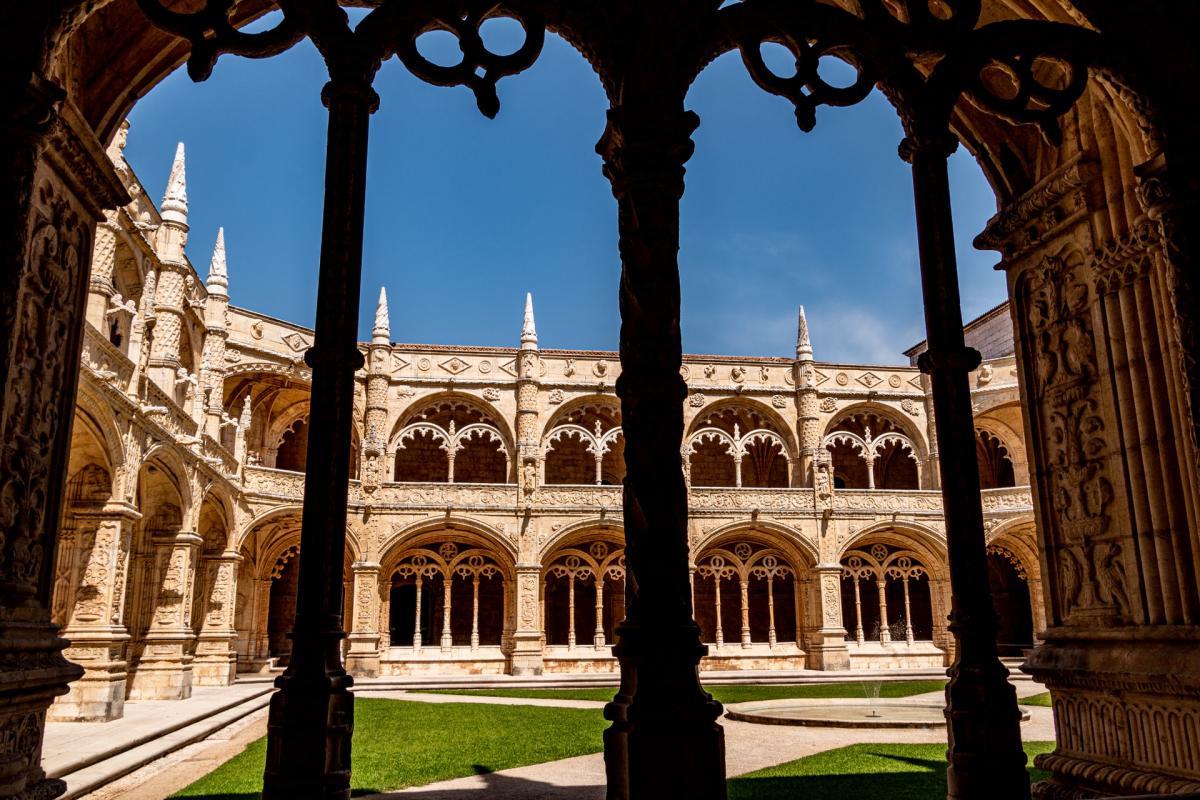
Also known as the Hieronymites Monastery, the Jeronimos Monastery was built in 1502 on the initiative of King Manuel I on the site of an old hermitage. According to the official story, it was on the occasion of Vasco de Gama’s return from his first expedition to India that the construction of this monastery was launched. Renovated after the great earthquake of 1755 and the Napoleonic wars, many important historical figures are now buried in this place, including King Manuel I and Vasco da Gama.
Registered as a UNESCO World Heritage Site since 1983, the Jeronimos Monastery is one of the best testimonies of the Portuguese great history and architectural heritage.
3. Castelo de São Jorge
This imposing castle is located on a hill overlooking the historic center of Lisbon, in the Alfama district. Its troubled history makes it a key monument in the history of Portugal.
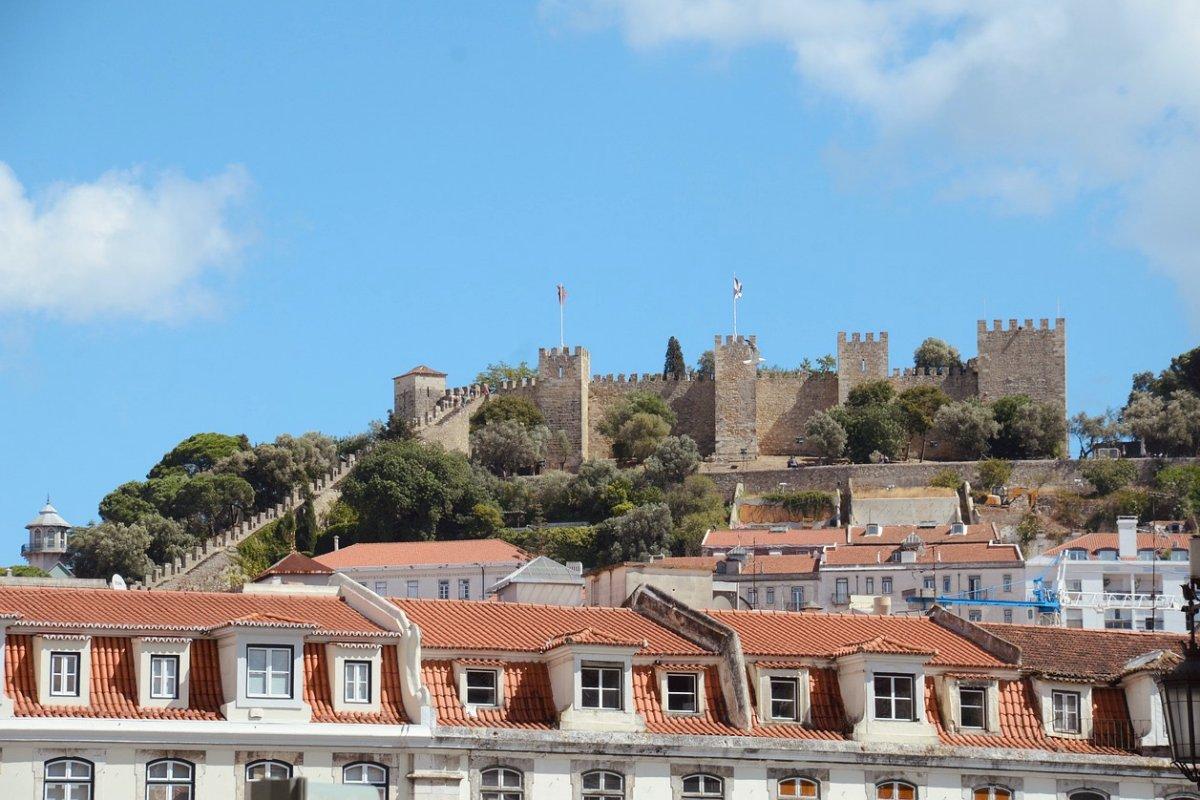
Initially, the Castelo de São Jorge was a defensive fortress built in the 11th century by the Moors. It was transformed into a castle following Portugal’s victory against the Moors in 1147. Then, the castle survived the sieges of the Castilians during the 14th century, then the earthquake of 1755, and was only fully restored in 1938.
Today, the Castelo de São Jorge is very popular and its shaded terraces called miradouro offer wonderful views over Lisbon and the Tagus River. In addition to the view, a visit to the Castelo de São Jorge includes a museum featuring ancient ruins, towers, fortified walls, and gardens.
4. 25 de Abril Bridge
The 25 de Abril Bridge, with a length of more than 2,000 meters, connects the Portuguese capital to the city of Almada. This red suspension bridge, strongly similar to San Francisco’s Golden Gate Bridge, is one of the most representative landmarks of Lisbon, together with the Tram 28 and Belem.
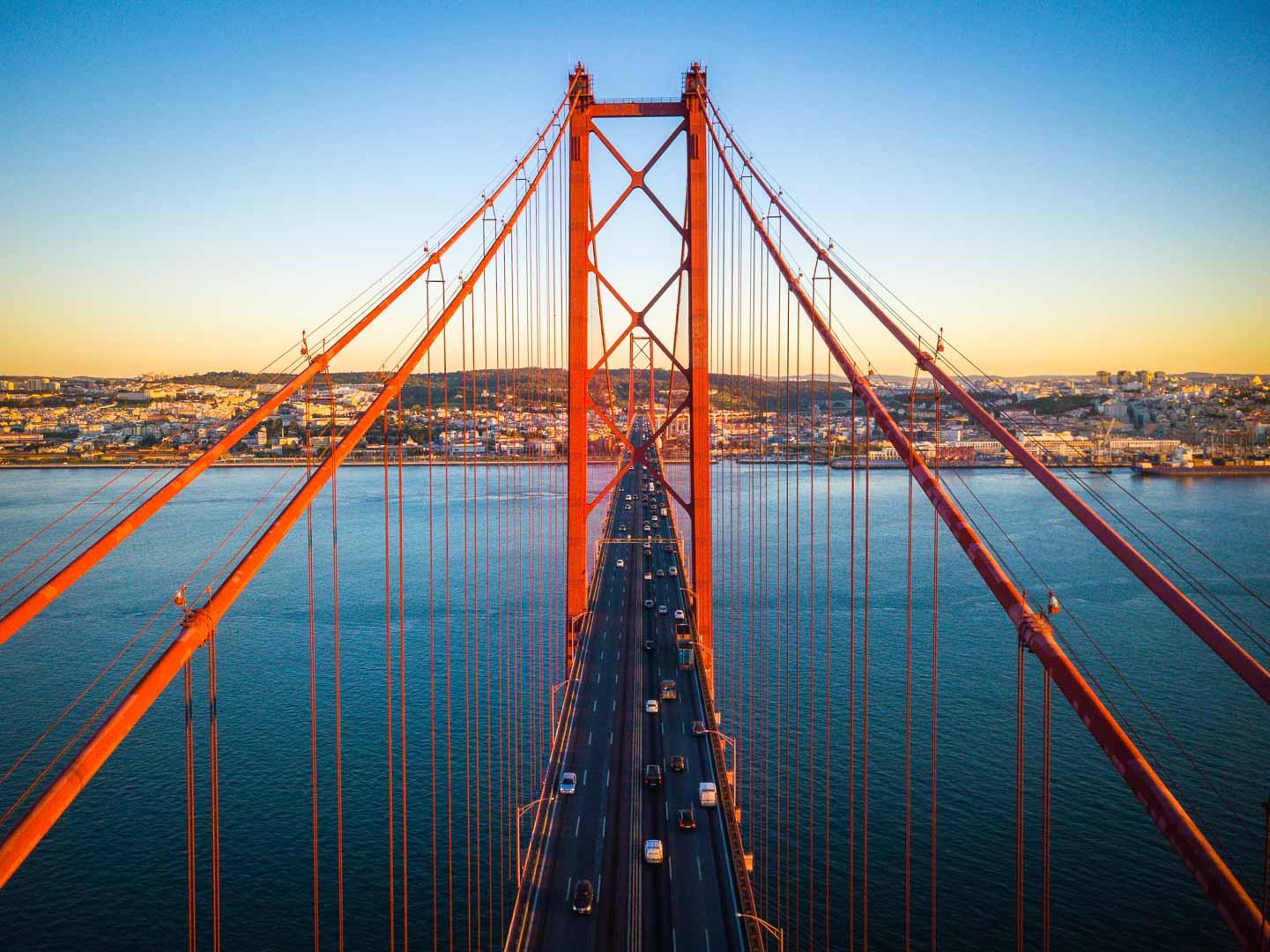
The construction of the bridge is at the initiative of António de Oliveira Salazar, Portuguese dictator between 1933 and 1970. It was built in 1966 and allows not only cars to cross it, but also the train just below the road. Formerly named Salazar Bridge, it was renamed in honor of the Carnation Revolution of April 25, 1974, which ended the dictatorship.
The best way to appreciate the bridge is during a sailing trip on the Tagus River. You can of course cross it by car or train, or visit the Pilar 7 if you want to go inside the bridge.
Read more: Learn more about the Ponte 25 de Abril
5. Cristo Rei Statue (Sanctuary of Christ the King)
Inspired by the Christ the Redeemer of Rio de Janeiro, the Cristo Rei watches over Lisbon from the town of Almada, across the city and the Tagus River.
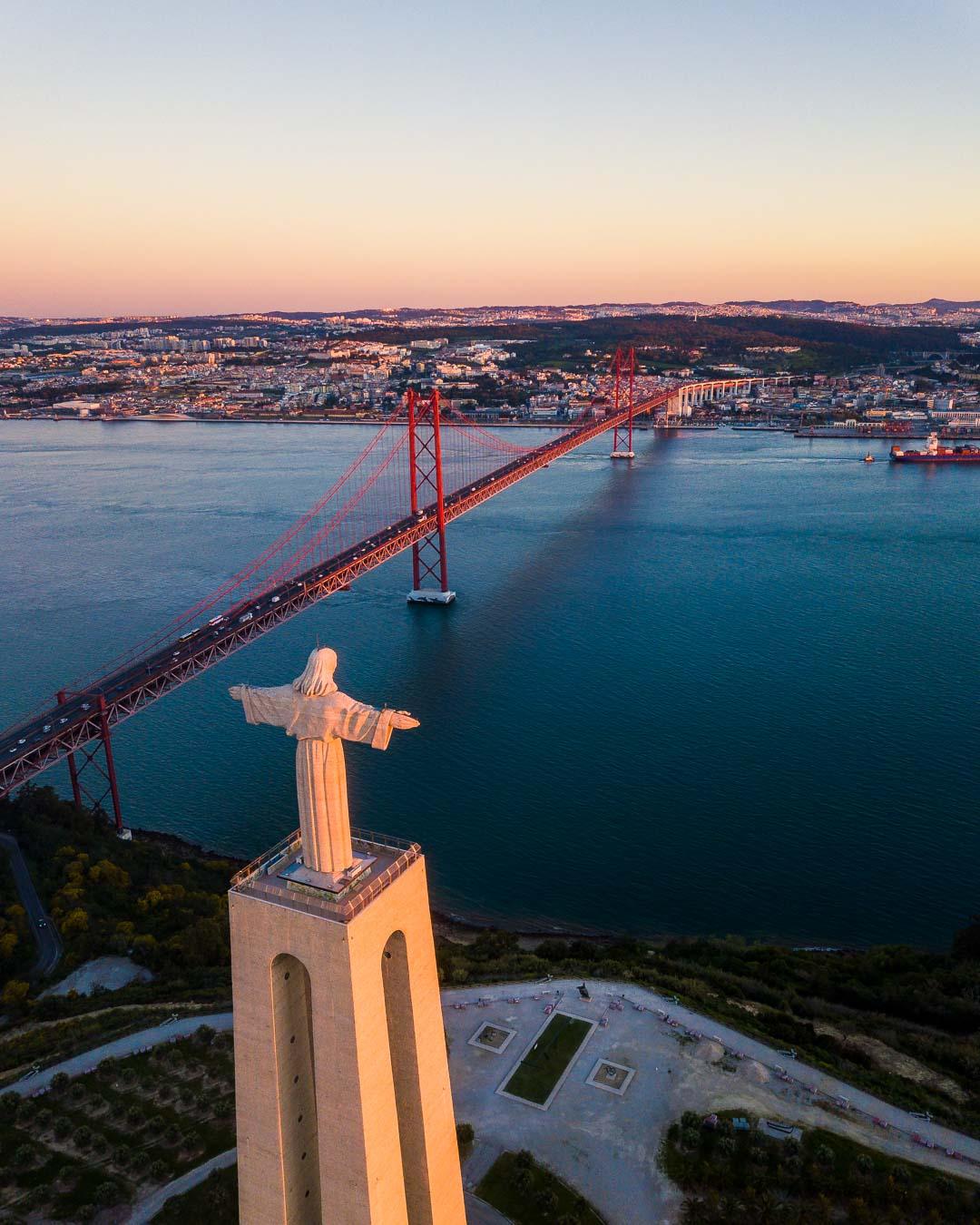
This Portugal building was completed in 1959 and symbolizes Portugal’s gratitude for being spared from the damage of World War II. The statue of Christ the King, with open arms and facing Lisbon, is 28 meters high and reaches 110 meters with the base.
To reach the statue, you can cross the 25 de Abril Bridge, or mix business with pleasure by taking a cruise on the Tagus River if you choose the ferry to reach the site. In any case, it’s a visit not to be missed as the panoramas on the city and the red bridge are simply breathtaking.
Read more: Explore the Cristo Rei
6. Pena Palace
Located in the city of Sintra, about 30 minutes northwest of Lisbon, Pena Palace is an unforgettable architectural wonder. Standing on top of a hill in the park of Sintra-Cascais, it offers an incredible 360° view of the surrounding area.
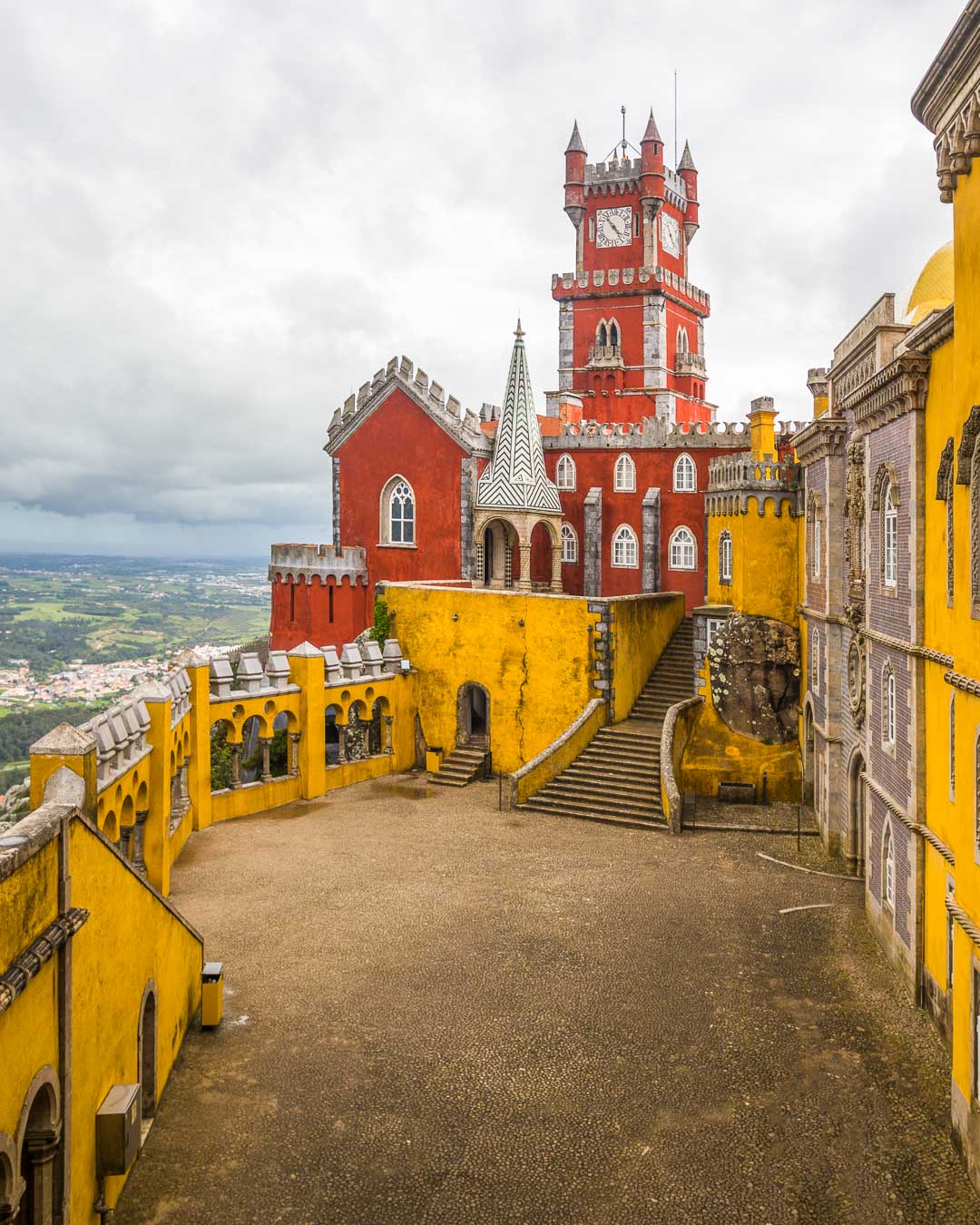
Pena Palace was commissioned by King Ferdinand II, a great lover of art, theater, and literature. He fell under the spell of an opera set and asked for a similar rendering. This is what makes the Palace of Pena such a special and colorful monument. It mixes multiple influences including Neo-Romanticism, Manueline, Gothic, Baroque, Moorish, Renaissance, and more. The result is exceptional. As a twist of fate, the palace was completed in the year of the king’s death, in 1885.
Since then, the castle has kept all its greatness and its colors remain bright. We can only recommend you to visit the Palace of Pena as soon as it opens as it’s so popular with tourists.
Read more: Discover Sintra’s Pena Palace
7. Castelo dos Mouros
Also located in Sintra, the Castelo dos Mouros dominates the city with almost 450 meters of perimeter and an area of 12,000 meters square. It’s so huge you can see it from Sintra’s train station!
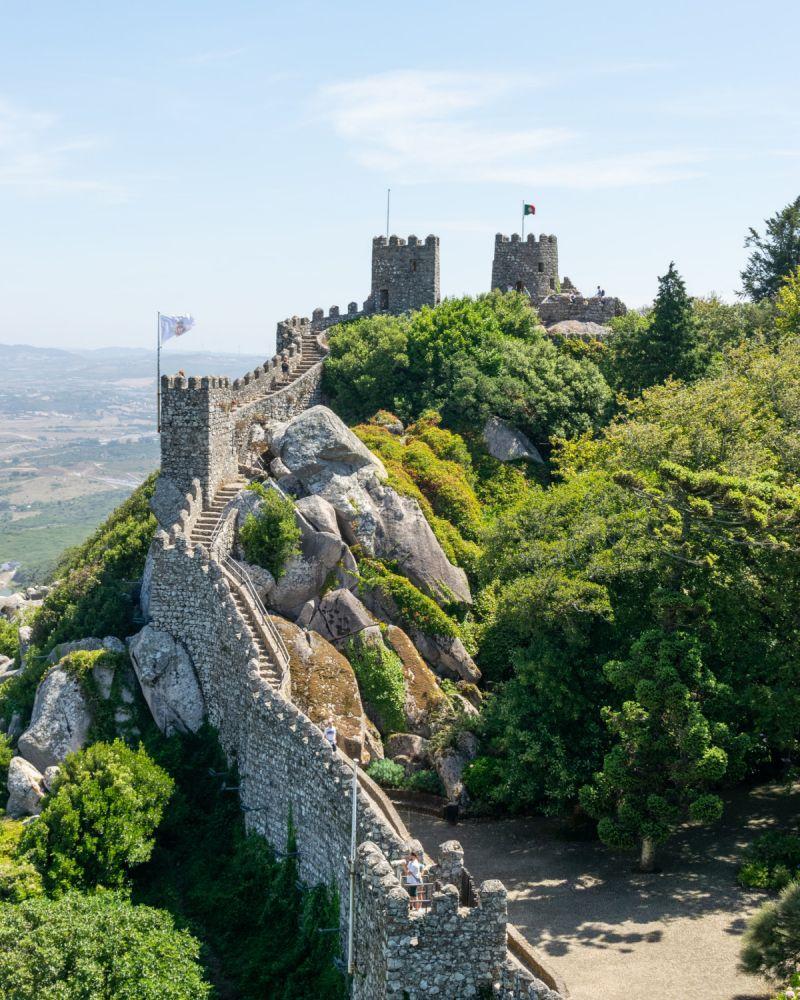
Its earliest fortifications appear around the 8th century, during the Muslim conquest of the Iberian Peninsula. The so-called Sintra Castle was then an important observation post of the coast. After being abandoned during the Christian crusades, it underwent various natural disasters. However, fires and earthquakes didn’t get the better of it. It was during the 19th century that the Castle of the Moors was restored and became a must-see of Sintra.
During your visit, make sure to go around the walls, climb in the keep and discover the horseshoe-shaped door, as well as the small chapel. But the highlight of the show is definitely the view of the whole region up to the ocean which will leave you speechless.
8. Quinta da Regaleira
A 15-minute walk from Castelo dos Mouros, Quinta de la Regaleira is one of Sintra’s most famous and surprising monuments. Composed of several buildings and a beautiful garden, it’s been a UNESCO World Heritage Site since 1995.
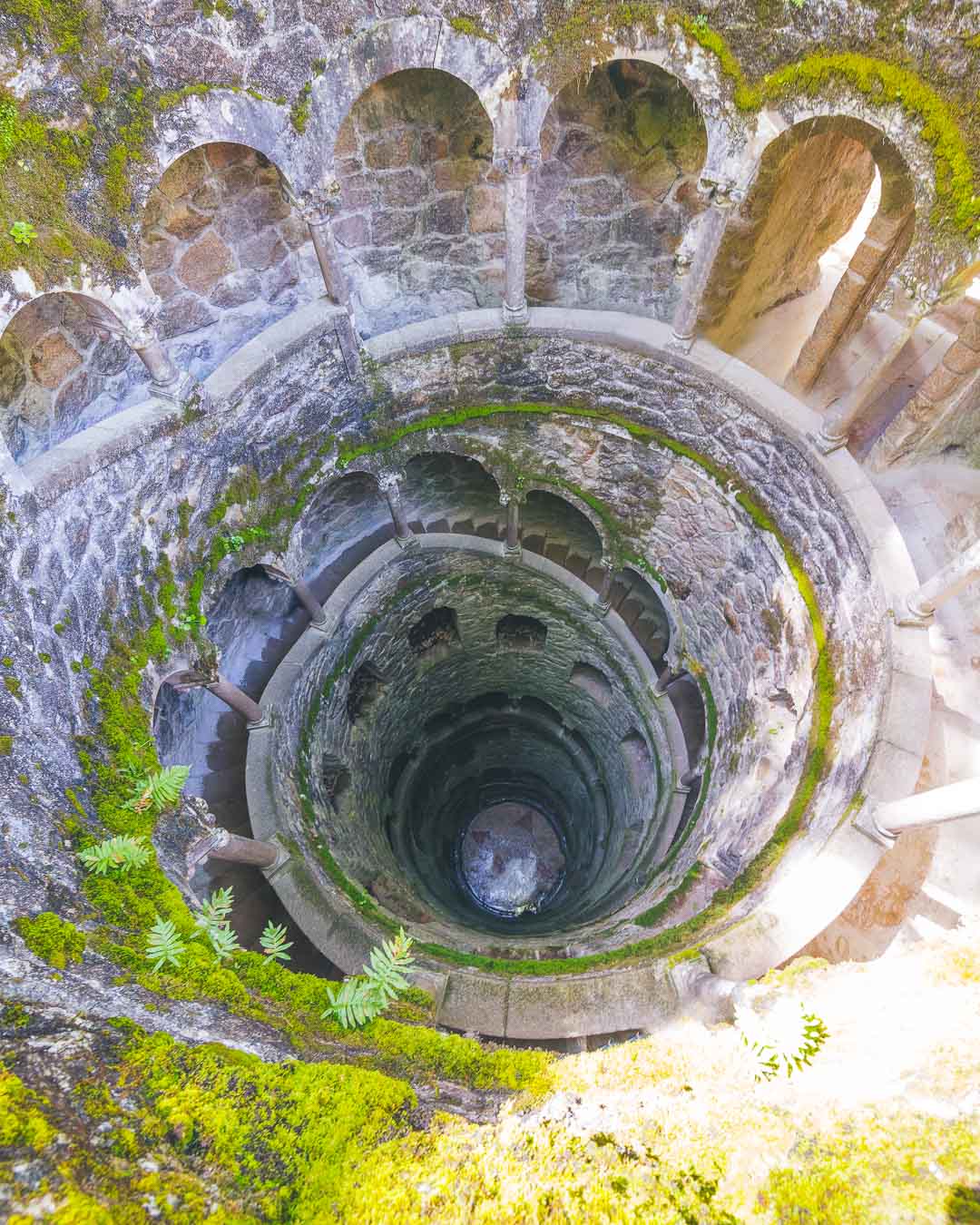
The property belonged to the Baroness de la Regaleira, daughter of a rich merchant from the city of Porto. The Brazilian millionaire and scientist Monteiro acquired the property in 1892 and commissioned Luigi Manini to build a palace and design a garden. The renowned Italian architect, who was also responsible for the Buçaco Palace, created the magical place that is the Quinta da Regaleira.
As you walk through the palace, its gardens, caves, and secret passages, you’ll come across many amazing details, including religious and Masonic symbolism. But the highlight is the initiation well you can enter by pushing a heavy stone door. In front of your eyes, a spiral staircase goes down into the bowels of the earth, up to 27 meters deep!
9. Dom Luis Bridge
The Dom Luis Bridge is a gorgeous building and a must-see of Porto located northwest of Portugal. Its arch is considered one of the largest arches in the world made of steel.
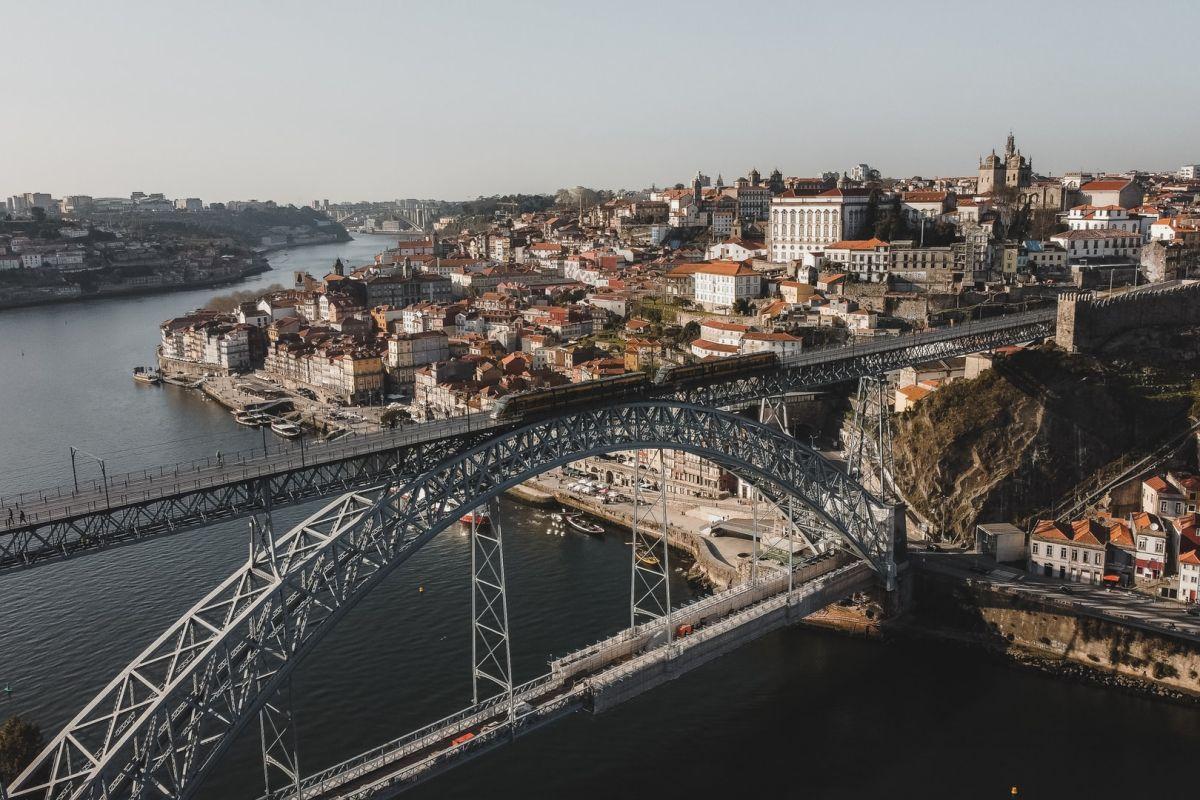
The Dom Luis I Bridge, or Ponte Luis I, is a metal bridge built between 1881 and 1888, connecting the Ribeira district of Porto and the town of Vila Nova de Gaia, separated by the Douro River. Designed by the engineer Théophile Seyrig, a disciple of the famous Gustave Eiffel, this bridge has exceptional dimensions: it’s 395 meters long, 8 meters wide, 45 meters high, and weighs 3045 tons!
The bridge has 2 levels: the upper level is used by the D line of the Porto subway and the lower level is dedicated to cars. Both levels are accessible to pedestrians, so we recommend you to take one level on the way out and the other on the way back, preferably at sunset.
10. Livraria Lello
Here’s a place you can’t miss in your Porto itinerary: Livraria Lello is one of the most beautiful bookstores in the world!

Even if you’re not interested in books, check out this beautiful neo-gothic bookstore that opened in 1906, where old, used and new books, including foreign language guides and literature, are stacked to the ceiling in different languages. At the top of the curved staircase, there’s a pleasant café.
When you look up to the sky, you can see a huge stained glass window covering the roof surface, on which the motto of the Lello brothers is inscribed, “Decus in Labore”, meaning “dignity in work”. But it’s the double-entrance staircase that made the bookstore famous, and that would’ve inspired J.K.Rowling to imagine some of the Hogwarts sets.
11. Bom Jesus do Monte
Listed as a UNESCO World Heritage Site since 2019, the Santuário do Bom Jesus do Monte is located in the city of Braga about 45 minutes drive north of Porto. It’s one of the most famous buildings in Portugal.
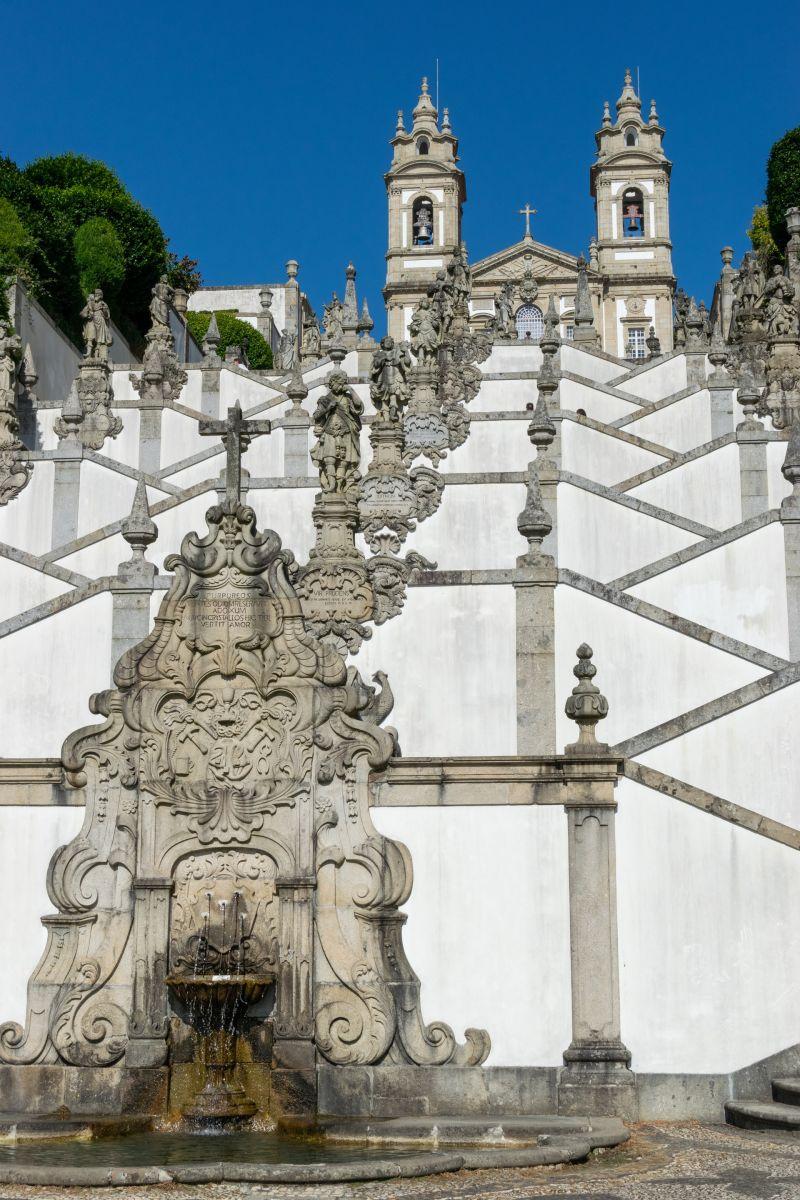
Considered a true masterpiece of baroque architecture, the Sanctuary of Bom Jesus Do Monte caused a great deal of trouble for its architects as it took nearly 37 years of work to be completed. Located on a hill in a beautiful park, the site’s main feature is the Sacred Way, a remarkable set of 3 huge staircases: the Via Crucis, the Staircase of the Five Senses, and the Virtues Staircase.
To reach the sanctuary, you can take the Sacred Way, a zigzag staircase of 577 steps that has differences in altitude of up to 116 meters! You can also choose to take the road or the hydraulic funicular.
12. Historic Village of Monsanto
Perched on top of a hill a few kilometers from the Spanish border, the historic village of Monsanto is unique in the world and one of the most amusing visits you can make in Portugal.
Indeed, the top of the hill is covered with rocks and houses have been built around them, using the rocks as walls or roofs. This creates architectural wonders, the most famous being the Miradouro do Forno. The village is also home to a castle, the Monsanto Castle. You can visit the castle’s ruins as well as its beautiful tower that offers a breathtaking panoramic view of the village.
Although the first human traces on the site date back to the Paleolithic period, only a few people still live in the village today. Most of the people have moved to the foot of the hills for more convenience. Voted the most Portuguese village in Portugal, Monsanto is definitely a must-see!
13. Castelo de Guimarães
Perched on a rocky hill, just a few steps from the city center, the Castle of Guimarães is a mandatory stop for any visitor to Northern Portugal.
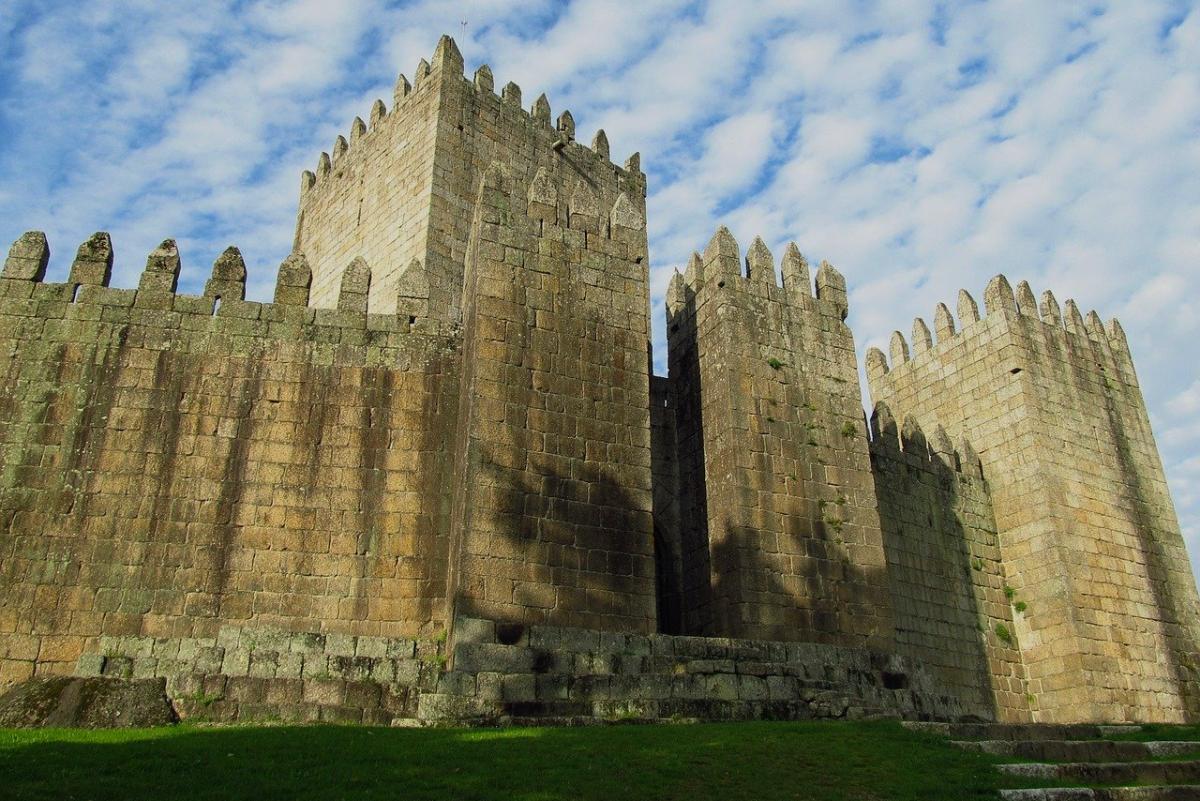
The history of the Castle of Guimarães begins in the 10th century when the Countess Mumadona Diaz acquires lands located in the current site of Guimarães, on which she quickly orders the construction of a monastery. However, the region was plagued by constant deadly invasions by Vikings and Moors. The countess, therefore, ordered the construction of a fortress where the monks could take refuge: the Castle of Guimarães was born. From the 12th century, the castle becomes the royal residence of King Alfonso I, and this until the 14th century.
Mixing Romanesque and Gothic influences, the Castle of Guimarães is a vast fortress surrounded by ramparts marked by 7 square towers. In the heart of the fortress, the keep rises to 28 meters from the top of which you’ll have beautiful views of the surroundings.
14. Coimbra University
Located almost halfway between Porto and Lisbon in Coimbra, this university is a major institution in a city considered the cultural and intellectual center of Portugal.
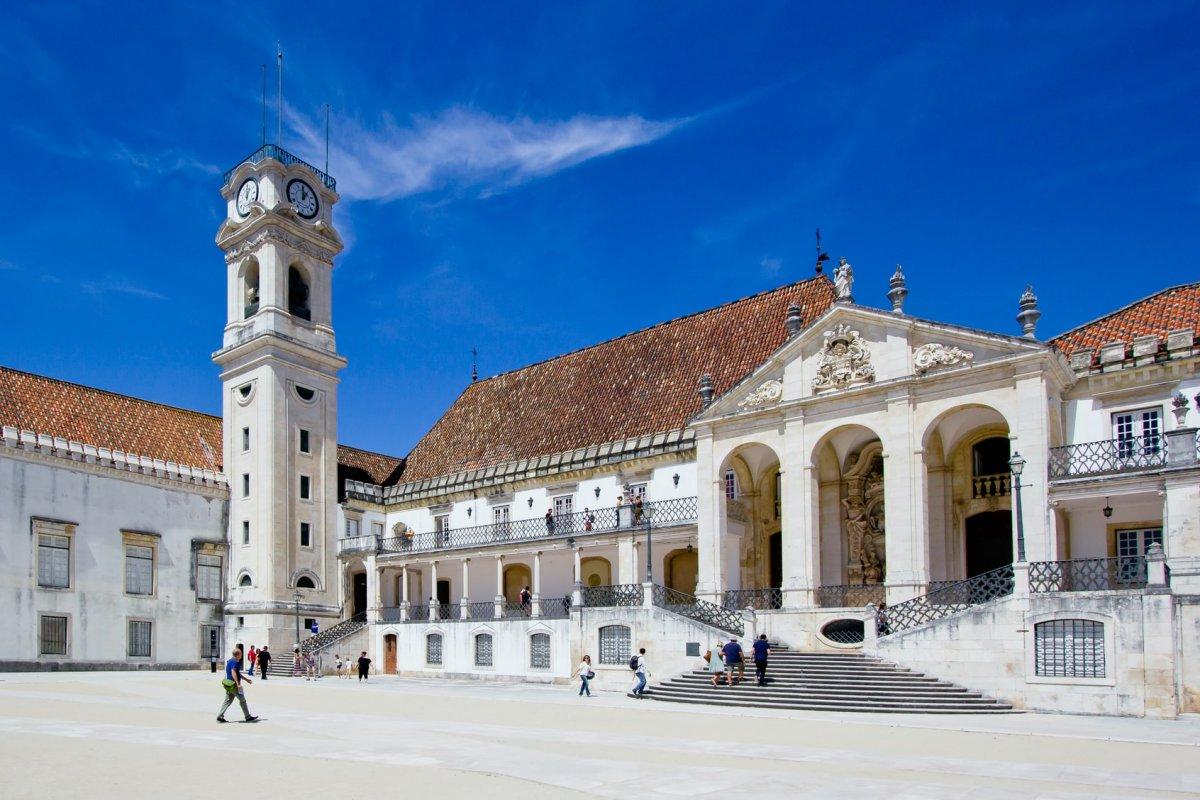
Often referred to as one of the oldest universities in Europe, like England’s Oxford or France’s Sorbonne, the University of Coimbra was founded in Lisbon in 1290 by King Denis I before being permanently transferred to Coimbra in 1537. Nowadays, the university welcomes nearly 20,000 students.
Besides enjoying the university’s beautiful facade, you can discover inside the São Miguel Chapel, the medieval prison, the Arms Room, the University Tower, and the Joanina Library. Nearby, Rua da Sofia has been declared a UNESCO World Heritage Site along with the University of Coimbra.
15. Óbidos Castle
Óbidos Castle is located in the medieval city of Óbidos, a town perched on a hill in western Portugal about an hour’s drive from Lisbon.
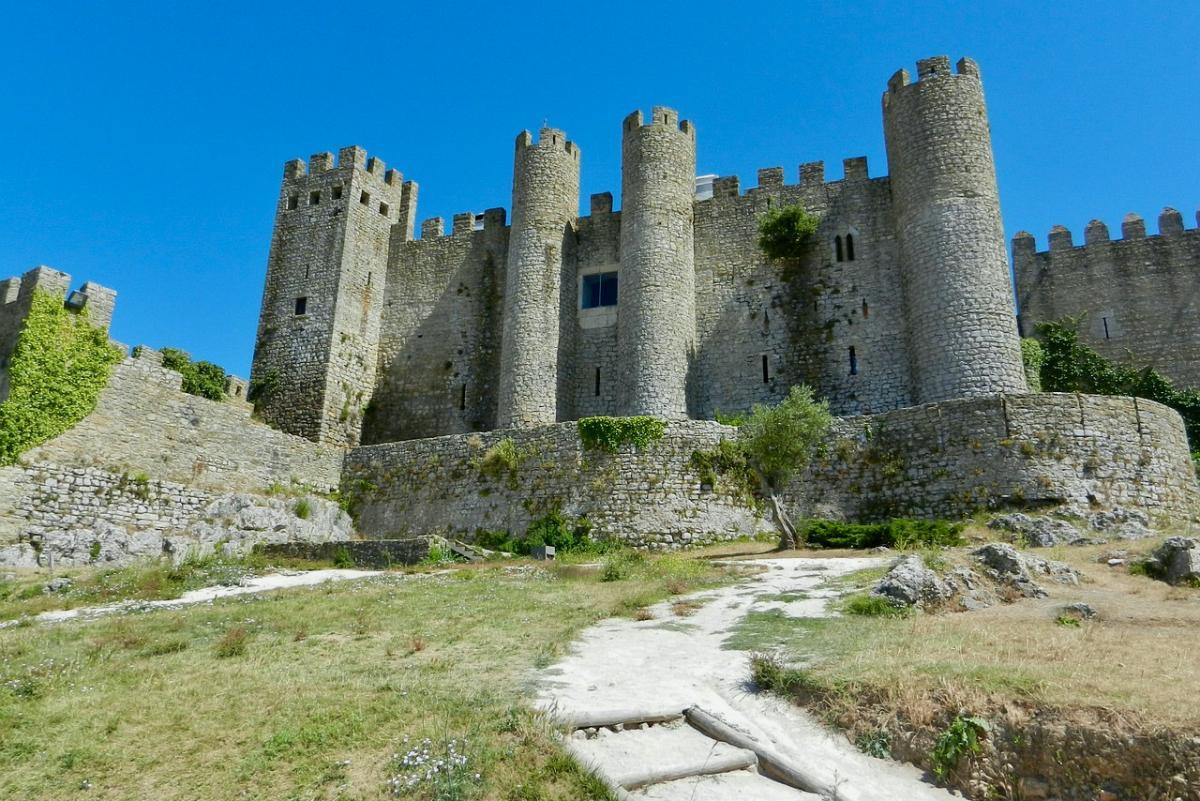
Óbidos Castle is a classic medieval castle: it has sturdy stone walls, an impenetrable keep, and defensive ramparts. In the 8th century, the Moors established a fortification on top of the hill. This was taken over in 1148 by the first king of Portugal, Alfonso I of Portugal. The castle that we see today dates from the 13th century and was built during the reign of Dom Dinis.
Besides these walls and the medieval castle, the historical center of Óbidos is one of the most picturesque places to visit in Portugal with its labyrinth of narrow cobbled streets, its lively squares and local markets, its typical houses,…
16. Evora Roman Temple
Located in the historical center of the city-museum of Evora, the Roman Temple dedicated to the goddess Diana is one of the most important historical ruins in Portugal.
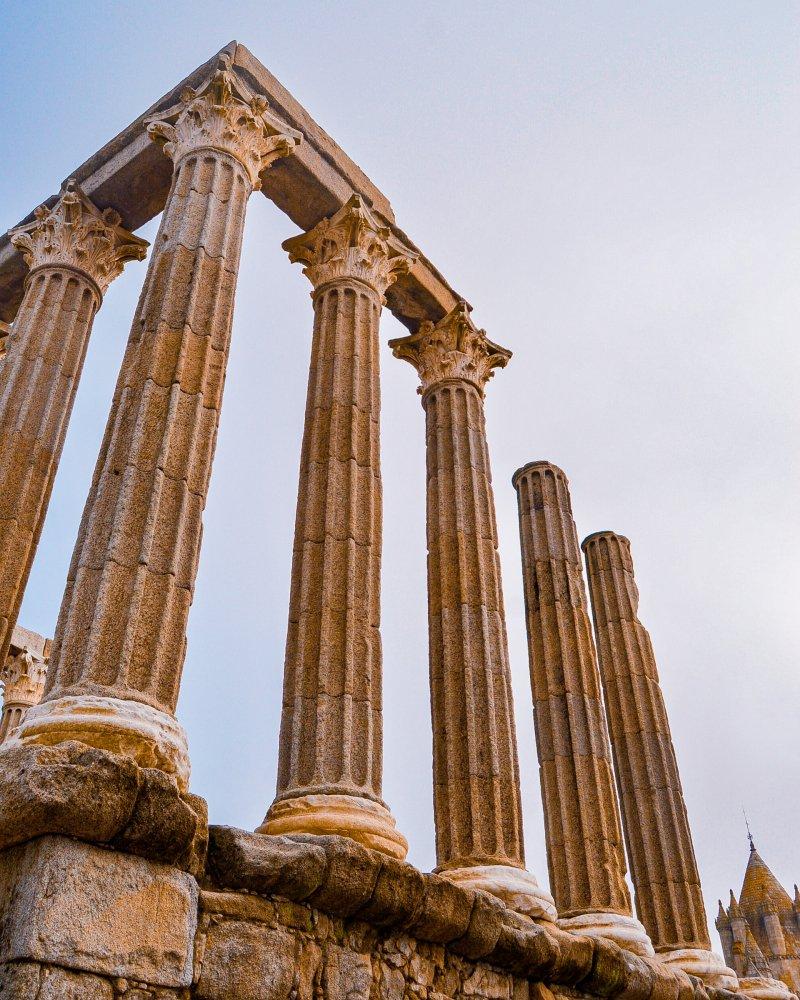
The Roman Temple of Evora is 2000 years old and is remarkable for its 14 elegant columns that have remained intact and for reflecting the Roman presence in Portugal. Built in the 1st century under Emperor Augustus, the temple was almost destroyed during the barbarian invasions of the 5th century. Transformed into a vault then into a butchery, these columns were rediscovered only in the 19th century and rehabilitated.
Listed as a UNESCO World Heritage Site since 1986, this temple is the only remnant of the Roman Forum in the city of Evora.
Famous Natural Landmarks in Portugal
If Portugal is a perfect destination for a city break, the country is also an ideal place for a stay close to nature. From paradise beaches to lush forests, Portugal has everything to please any nature lover.
Let’s discover 14 of them that are major landmarks in Portugal.
17. Benagil Cave
Benagil is a small fishing village located on the southern coast of the Algarve. This Portuguese region has become increasingly famous in recent years for its incredible sea caves.
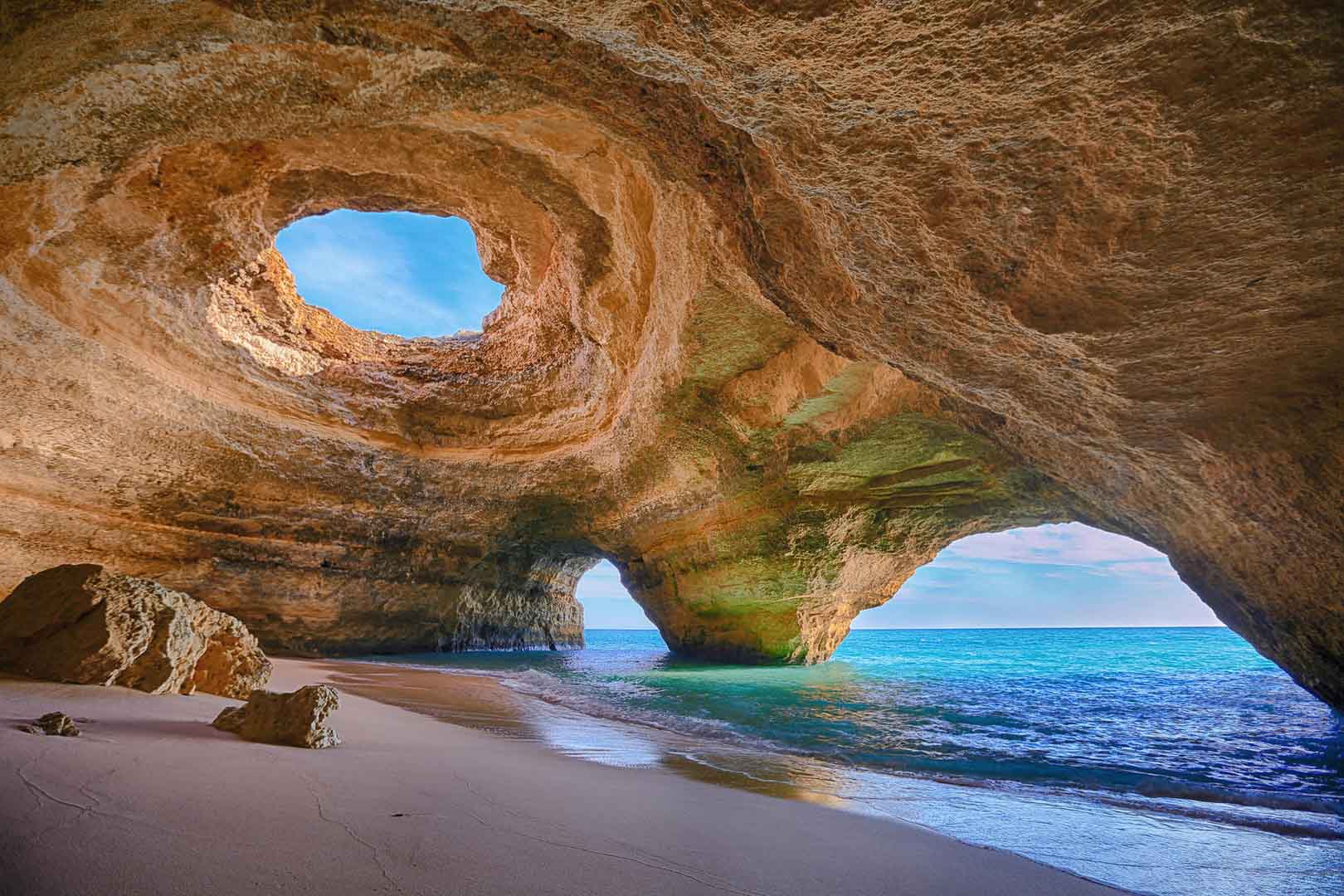
Located between Praia de Carvoeiro and Armação de Pêra, Benagil has always been a favorite destination for locals looking to enjoy the summer on the beach and explore these extraordinary rock formations. The Benagil cave is one of the most beautiful in the world according to many tourist guides.
The Algar de Benagil, as it’s called in Portuguese, is indeed impressive for its particular shape with a kind of open dome letting the sunlight through, a hole dug by the erosion of the rock. Whether you’re by boat, kayak, or paddle, visiting the Benagil Cave is a magical moment.
Read more: Travel Guide to Benagil Cave
18. Ponta da Piedade
Also located in the Algarve in the city of Lagos close to Praia do Camilo, Ponta da Piedade is one of the most beautiful beaches in Portugal and the world!
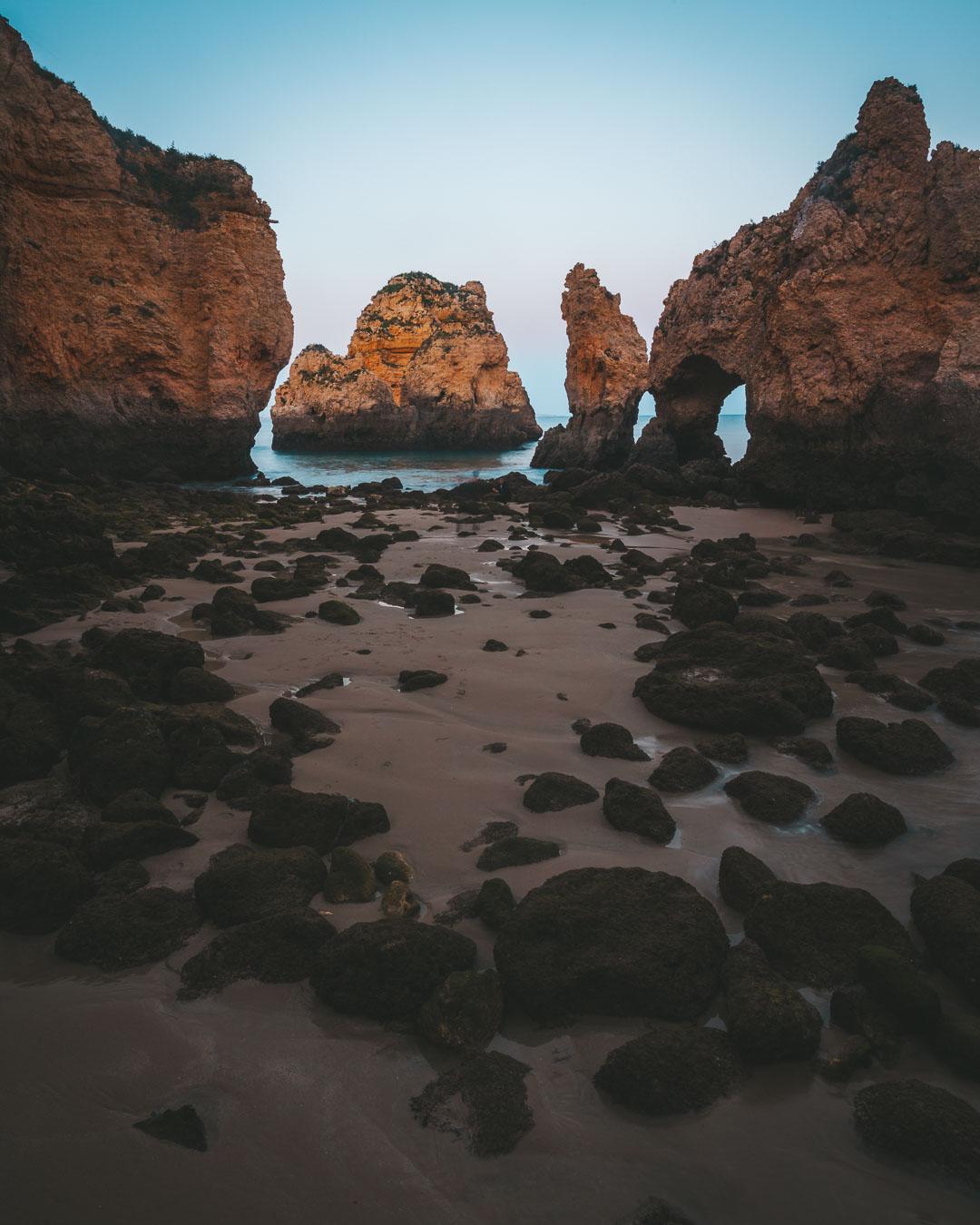
Ponta da Piedade (which means in Point of Piety in Portuguese) is a very special beach because it is surrounded by cliffs up to 20 meters high. This small piece of coastline features arches, caves, pinnacles, rock pillars, and caves that have been sculpted by erosion over the centuries.
You can observe the rock formations from the top of the cliffs accessible by foot from the nearby beaches, by the sea in a boat or kayak, or take the huge staircase to the bottom. If you choose the last option, you should go there at low tide to walk among the rocks.
Read more: Explore Ponta da Piedade
19. Marinha Beach
Praia da Marinha is another Algarve beach also considered by many as one of the most beautiful in the world.
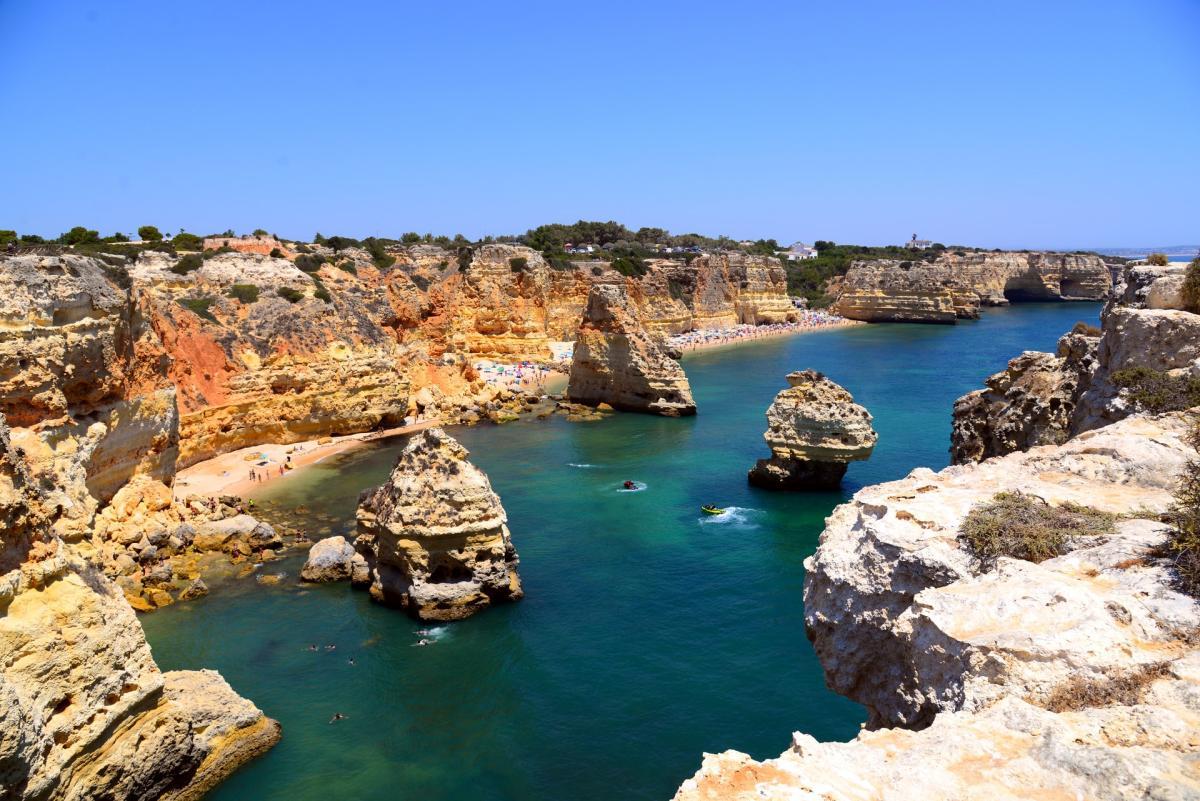
Located between the cities of Portimao and Albufeira at only 10 minutes from the Benagil Caves, Marinha Beach offers spectacular cliffs like many other beaches in the region. But the most impressive about this beach is the number of sea stacks, arches, and other incredible rock formations sculpted by erosion.
Popular with both locals and tourists, this relatively small beach is usually not too crowded, making it the perfect place to spend some quality time. At low tide, you can explore its charming coves hidden in the surrounding cliffs.
20. Cabo de São Vicente
Considered the tip of the Algarve, Cabo de São Vicente (Cape St. Vincent) is an 80-meter high cliff dominated by a lighthouse dating from 1906 and an old monastery.
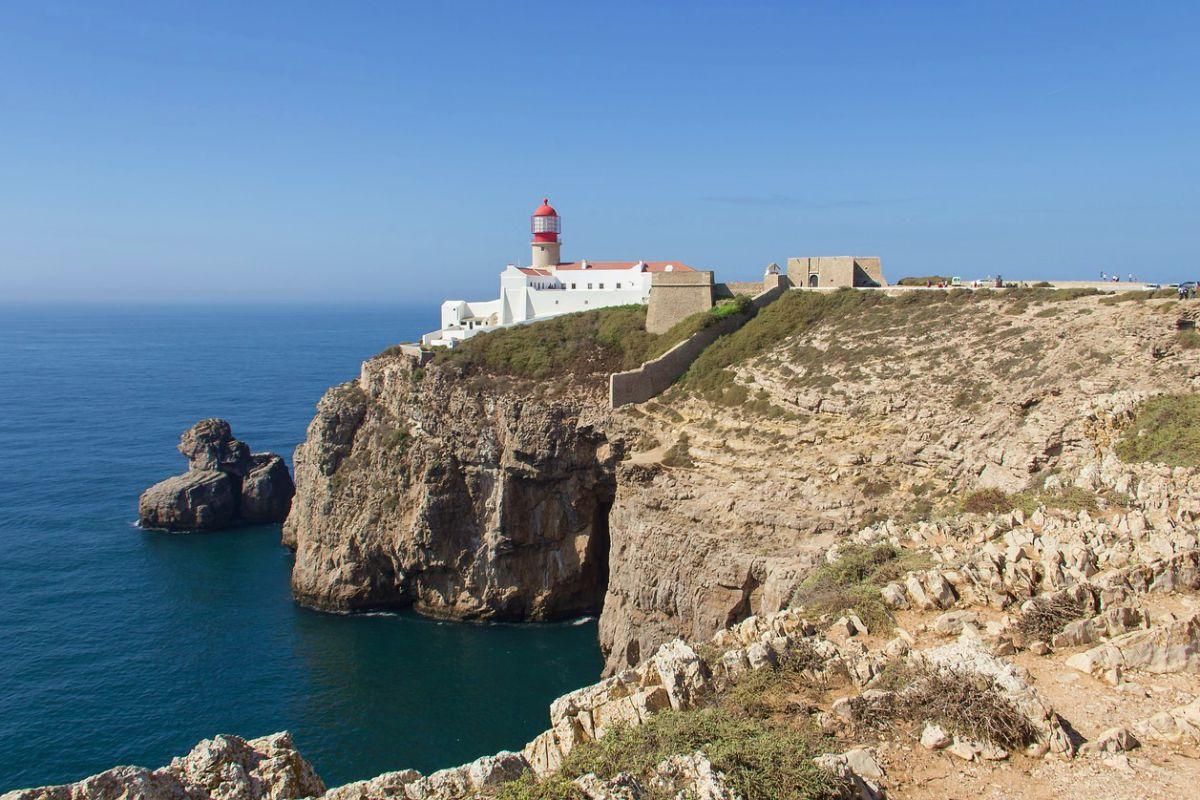
The view is breathtaking with the cliffs beaten by the winds that give a feeling of vertigo and an impression of the end of the world. It’s the ideal place to watch the sunset, even if it’s likely to be crowded.
There’s an impressive number of gannets and sea birds. The marine life is so rich you can even see whales and dolphins depending on the season. Put on a wind jacket and enjoy a walk on the side of the cliffs!
21. Douro Valley
It’s impossible to list the most beautiful natural attractions in Portugal without mentioning the birthplace of its famous wine, the Douro Valley.
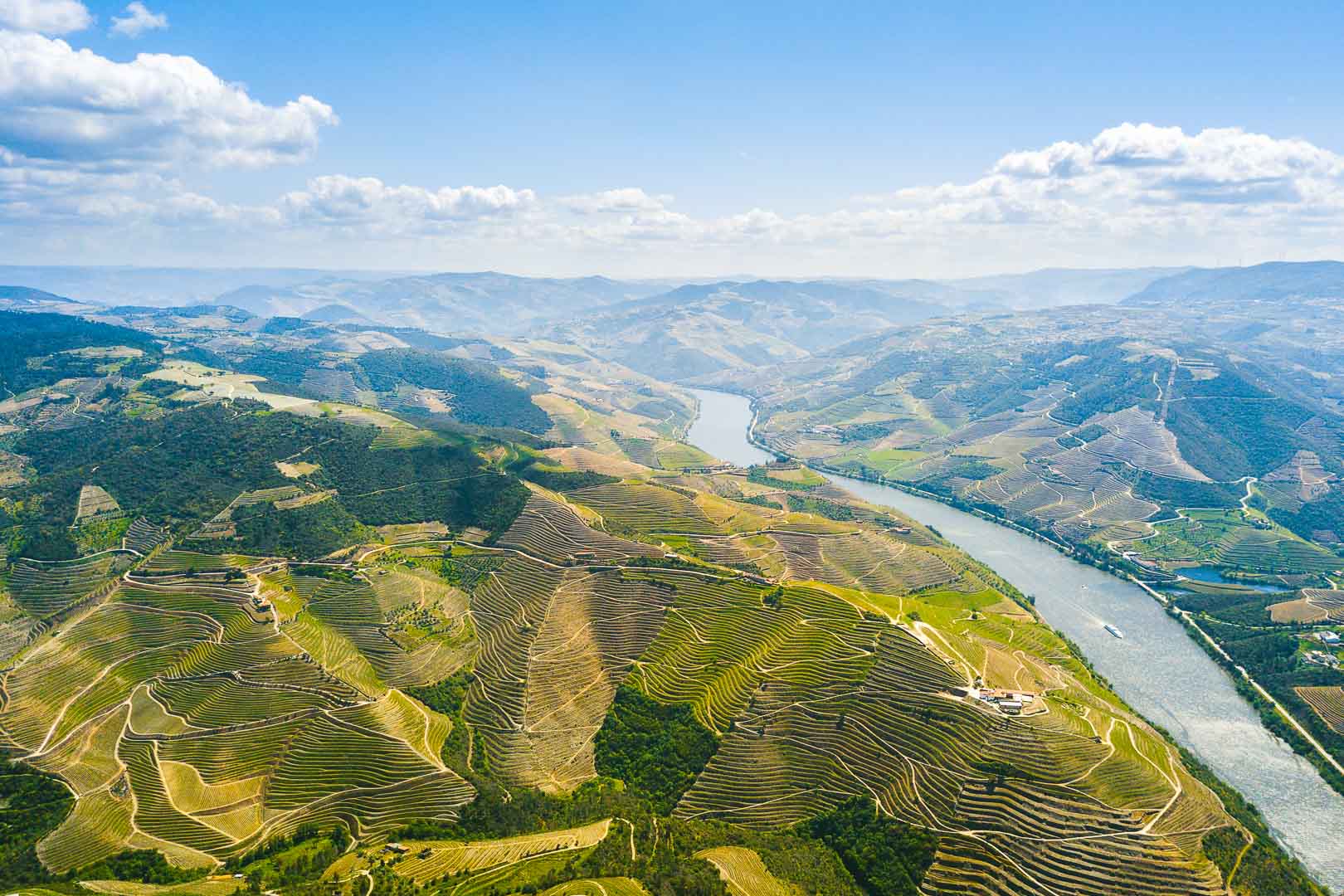
Located in the north of Portugal, the Douro Valley is one of the world’s best wine regions. It owes its fame to its outstanding vineyards, spreading out in terraces around the river. In the upper Douro, between Peso da Regua and the Spanish border, vines are grown to produce the famous port wine. The lower valley of the river, near Porto, is the domain of vinho verde, which favors youth and freshness.
Apart from its wine heritage, the region offers landscapes of great beauty sculpted by man since Antiquity. The terraced vineyards, the rabelos that sway on the Douro River, the charming picturesque villages, and the forests draw a wonderful postcard.
Read more: Day Trip to the Douro Valley
22. Praia da Costa Nova
The village of Costa Nova is famous for its beach, known as Praia da Costa Nova or Costa Nova Beach.
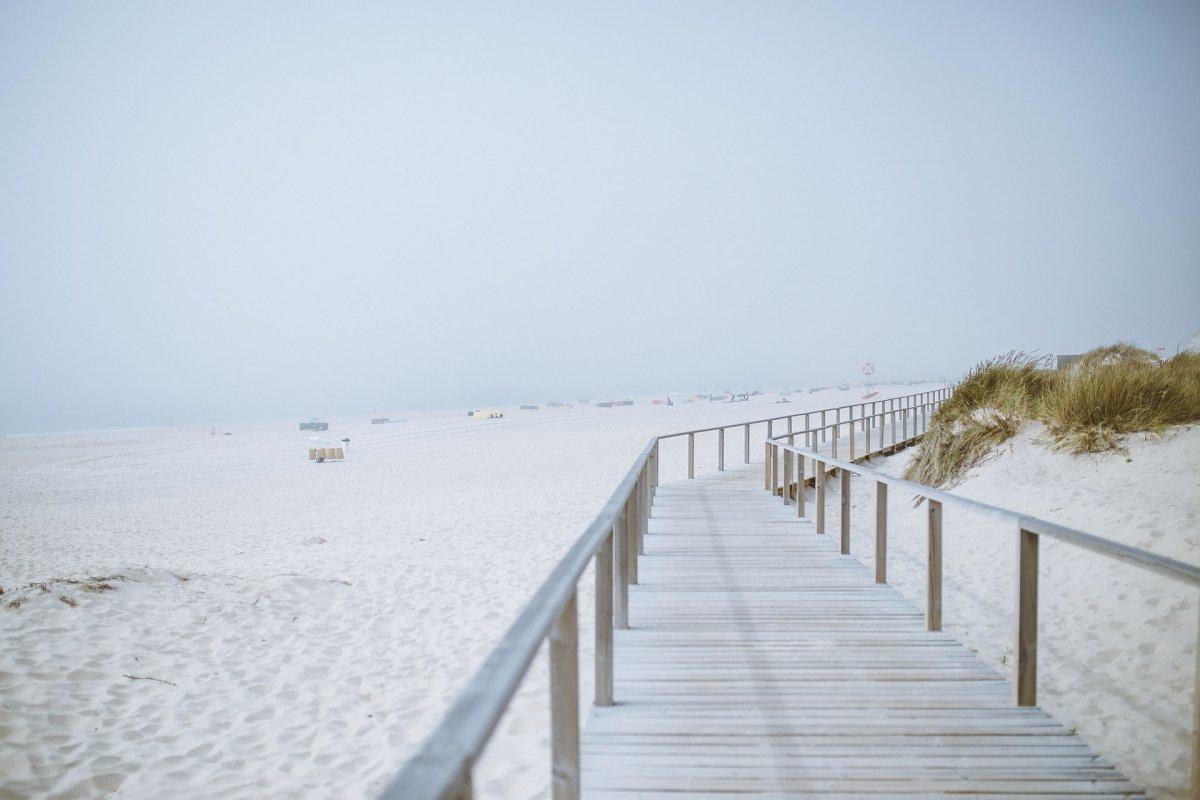
Located about 20 kilometers from the city of Aveiro, known as the little Venice of Portugal, Costa Nova is an old fishing village that has been renovated. If fishing is still the main activity here, the place now attracts many tourists thanks to its small houses striped with thousands of colors and its famous beach.
Still very much protected from tourism, Costa Nova Beach is a very long stretch of sand hidden from the city by the sand dunes with few facilities.
23. Cabo da Roca
This place has long been considered the end of the world. In fact, Cabo da Roca is the most western point of continental Europe.
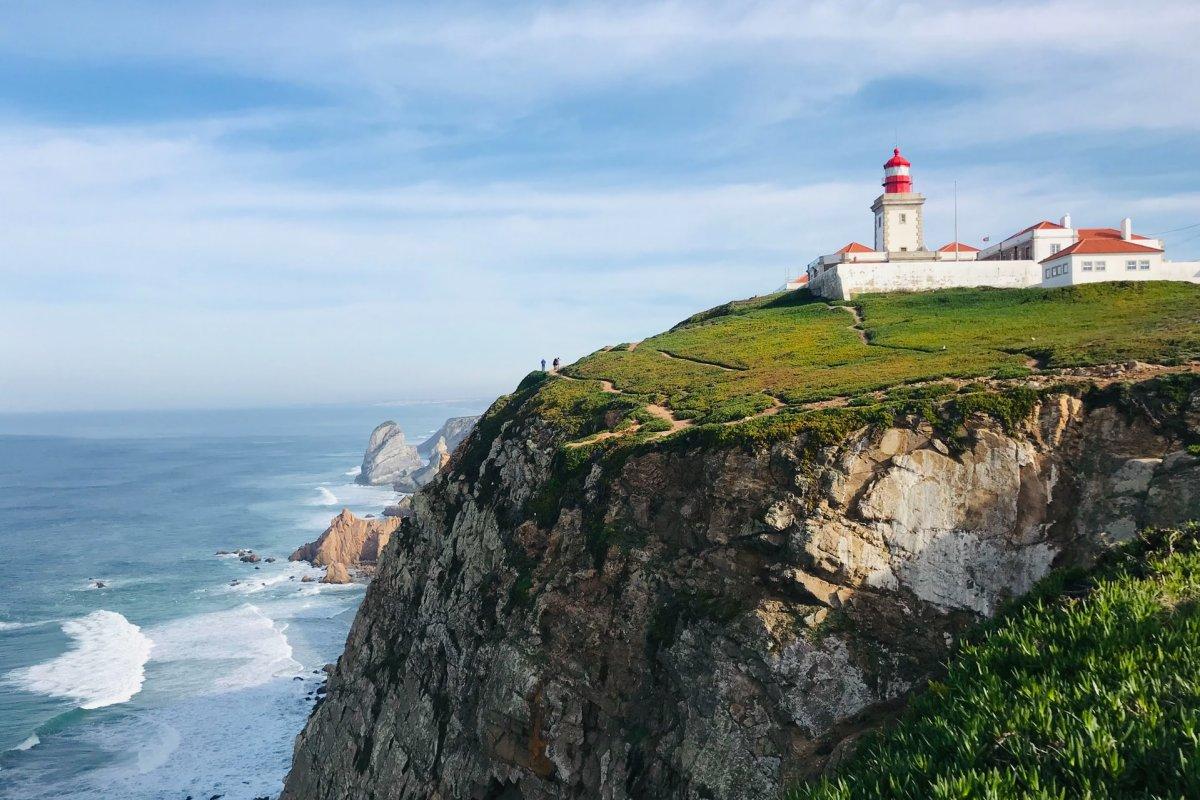
Located 25 minutes drive from Sintra, Cabo da Roca is a 150-meter high cliff overlooking the ocean. The scenery here will delight any nature lover, with the endless sea on one side and the mountains of the Sintra-Cascais Natural Park on the other.
Besides the many walks that this place offers, you’ll find the wonderful Ursa beach nearby and the Farol do Cabo da Roca, the lighthouse built in 1772 that is the third oldest building of its kind in Portugal. You can visit it if you’re here on a Wednesday afternoon. Its powerful light makes it visible from a distance of 46 kilometers!
24. Boca do Inferno
Boca do Inferno (“the mouth of hell” in Portuguese) is an open-pit located in the coastal cliffs near the town of Cascais.
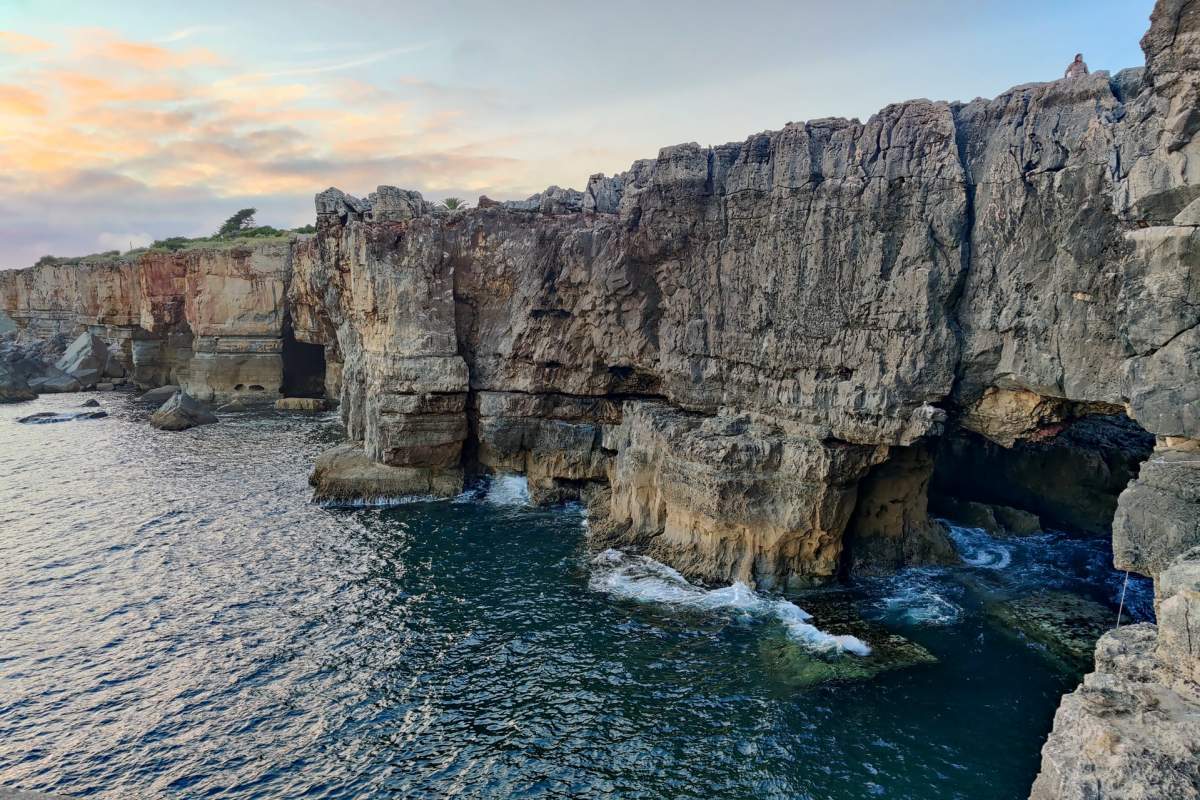
The huge hole was dug by the ocean water, particularly strong on this coast, constantly whipping the black and gray rocks with a thud which is said to be the roar of the devil according to the legend. Very impressive especially on windy days, the picture created by this bubbling water makes it a very popular tourist attraction.
Located only 17 minutes walk from the center of Cascais, the place is crowded with tourists because of its easy access. The view of the cliffs is still beautiful and the setting impressive.
25. Peneda-Gerês National Park
Located in the very north of Portugal, about 40 minutes from Braga, the Peneda-Gerês National Park is the only national park in Portugal! If the country has great natural spaces, only Peneda-Gerês has managed to earn this honorary title.
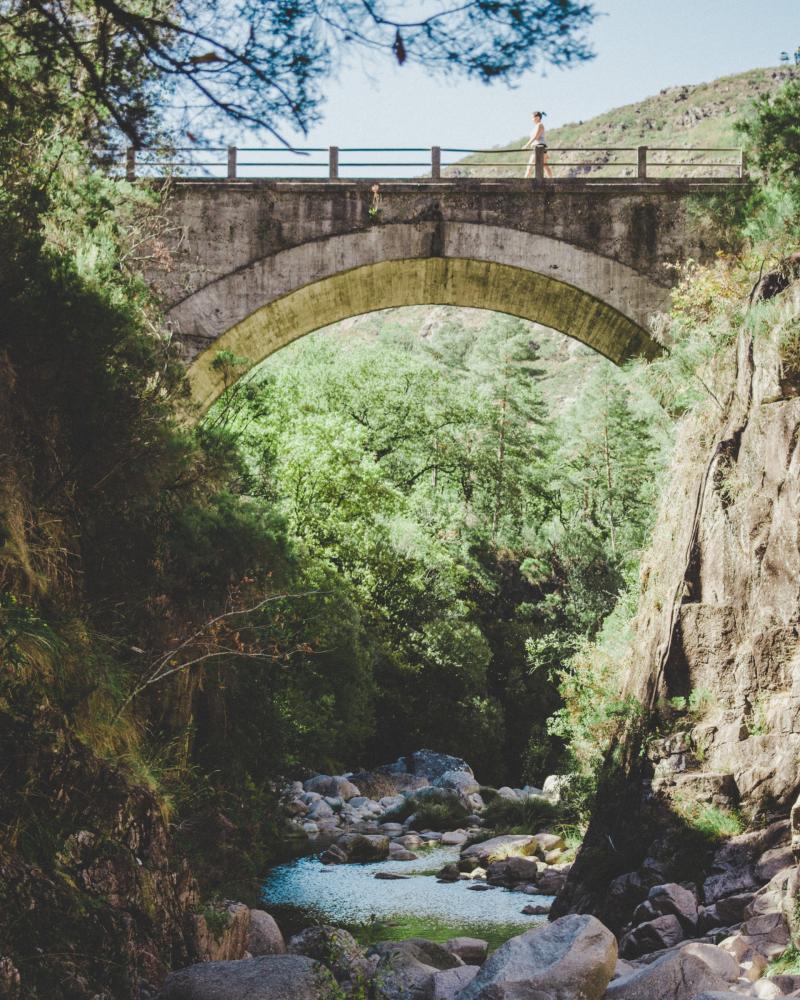
The Peneda-Gerês covers an area of 72,290 hectares and is home to an incredible variety of landscapes. Its fauna is impressive: you’ll be able to see cows, horses, ibexes, but also Iberian wolves in danger of extinction. There are also several traditional and secluded villages built in and around the park.
The best way to discover this park is to follow the Pedra Bela trail, a 4-hour hike through forests and pastures from the small village of Pedra Bela into the mountains.
26. Sete Cidades
Located on the north coast of Sao Miguel, the main island of the Azores Archipelago, Sete Cidades is one of the 3 volcanoes of the island.
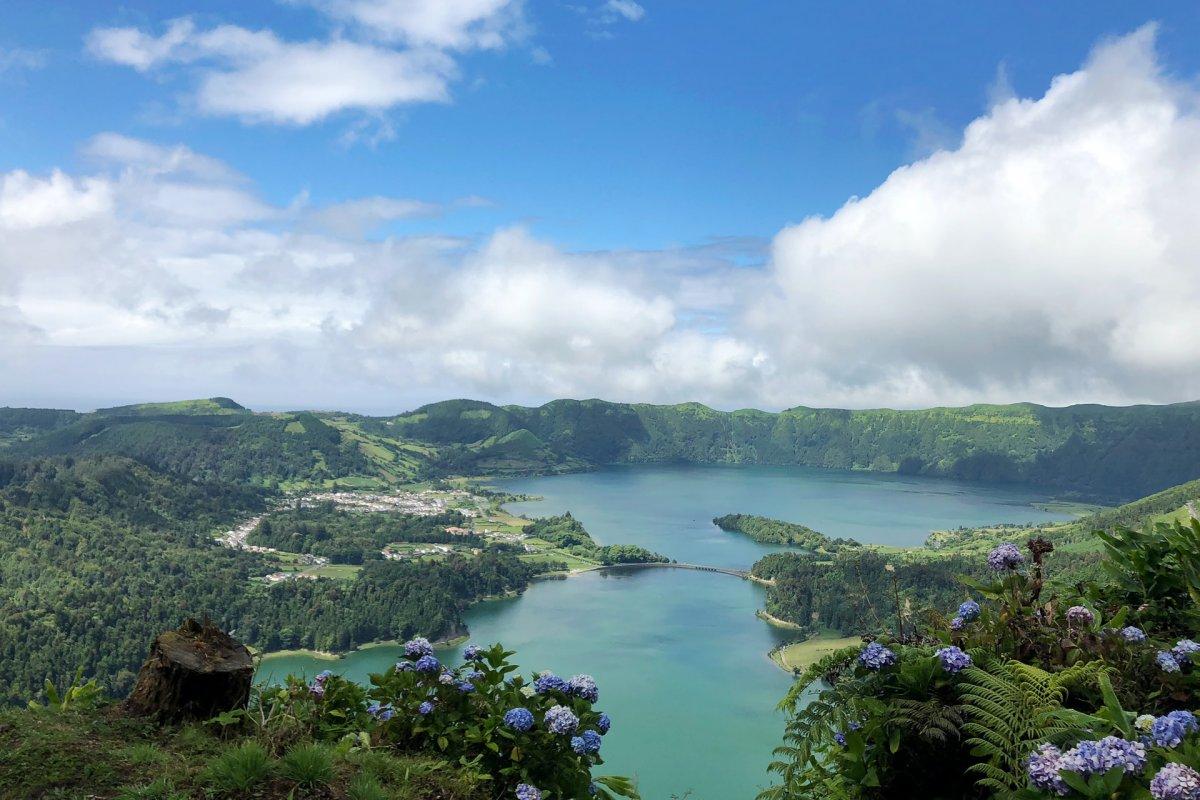
With a caldera of 5 kilometers in diameter and 500 meters deep, Sete Cidades has 2 lakes, the Lagoa Verde and the Lagoa Azul, creating an unforgettable landscape. A legend says that a volcanic eruption destroyed the “7 cities” that were once located near the volcano. This myth of the sunken cities arouses the imagination and some believe that Atlantis was in the Azores.
This site is now one of the most famous on the island and is considered one of the 7 natural wonders of Portugal. The viewpoints not to be missed are the Miradouro Boca de Inferno and the Mirador Vista do Rei which although touristy, is worth the visit.
27. Mount Pico
Located on the island of Pico in the Azores archipelago, Mount Pico is the highest peak in Portugal, reaching an altitude of 2,531 meters.
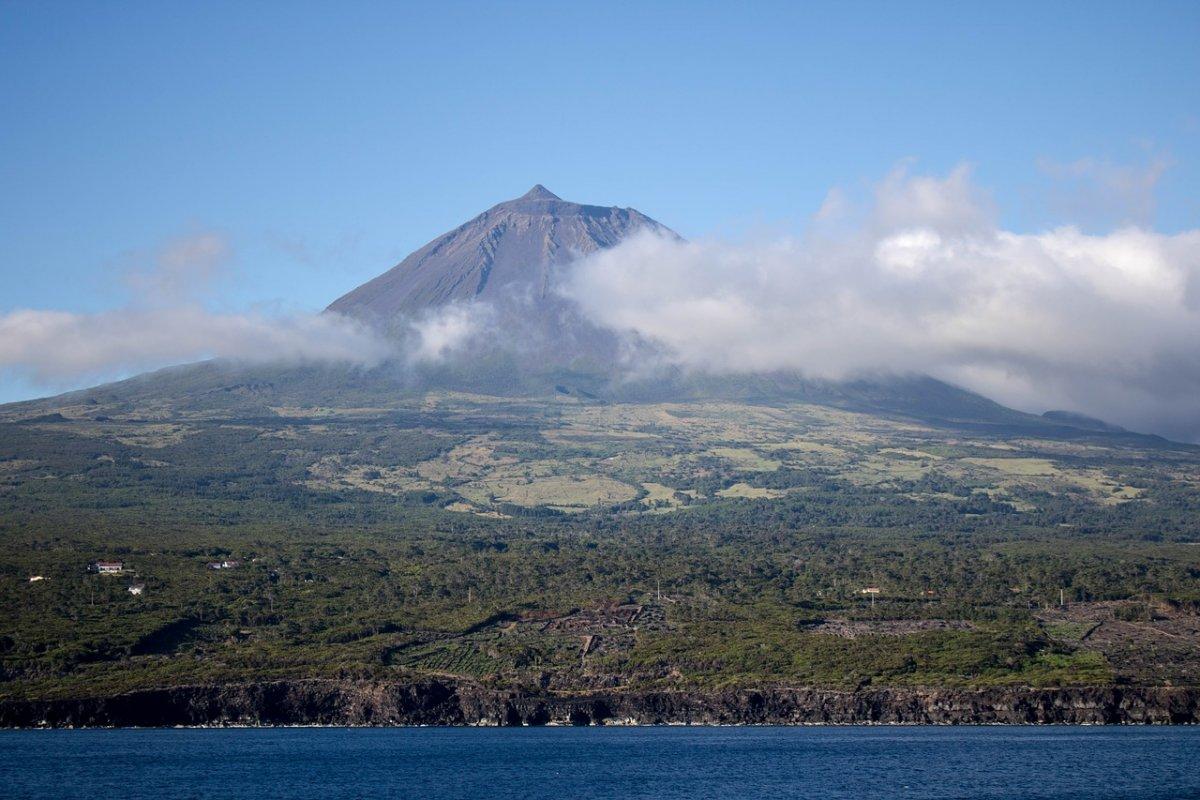
Mount Pico is a volcano that last erupted in 1720 and is now quiet enough to allow you to admire the islands of Faial, Terceira, São Jorge, and Graciosa from its summit.
There are several hiking trails leading up to the summit but it takes a day to do it (6 to 8 hours walk). It’s quite difficult and you almost have to climb to finish it! If hiking isn’t your thing, you can take a small walk at the start as the view is already nice.
28. Poço da Ribeira do Ferreiro
Poço da Ribeira do Ferreiro is the most famous place on the island of Flores and the one that makes many people want to visit this island of the Azores archipelago.
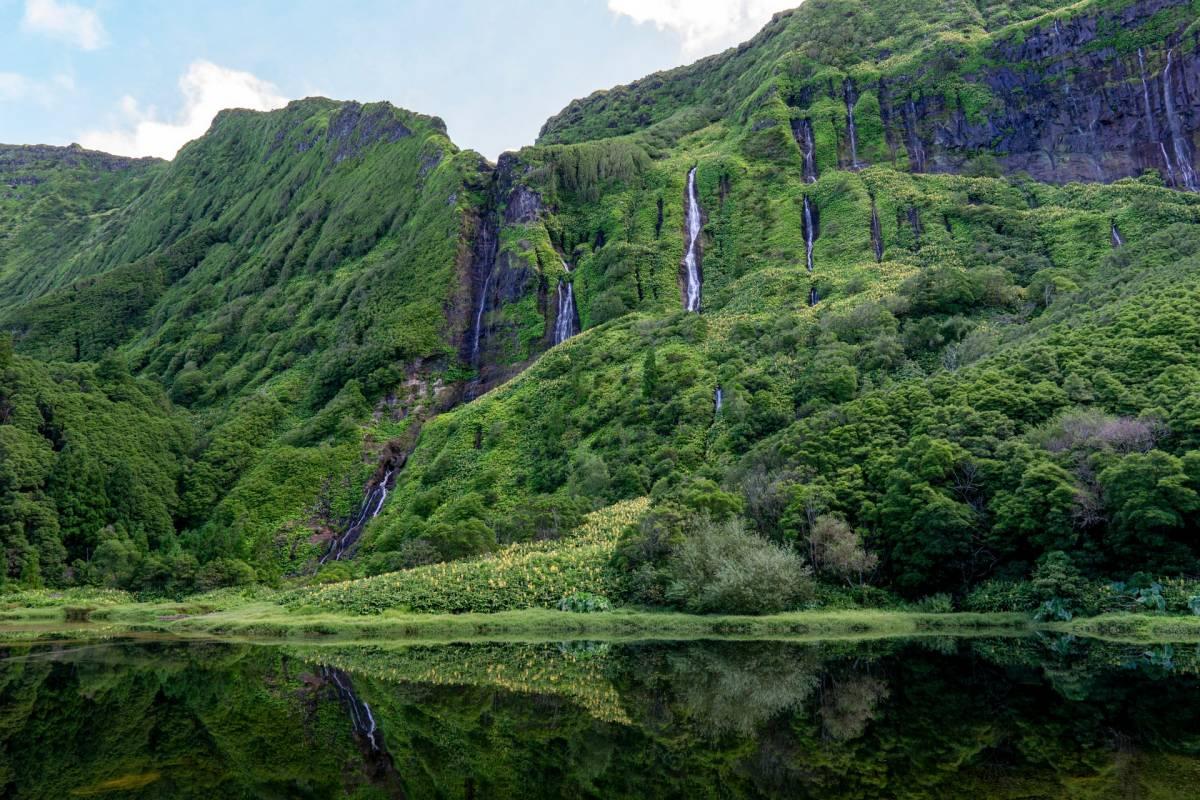
Also called Poço da Alagoinha or Lagoa das Patas, this place features dozens of waterfalls dropping from a huge cliff and forming a beautiful sight. At the foot of this cliff, there’s a large lake and a beautiful forest that make this place even more beautiful.
This green setting is incredible as nature looks wild and untouched by man. Bonus: you can reach this fabulous spot in only 15 minutes walking!
29. Pico Ruivo
Pico Ruivo is located on the island of Madeira, off the coast of Morocco. It’s the 3rd highest peak in Portugal by its size.
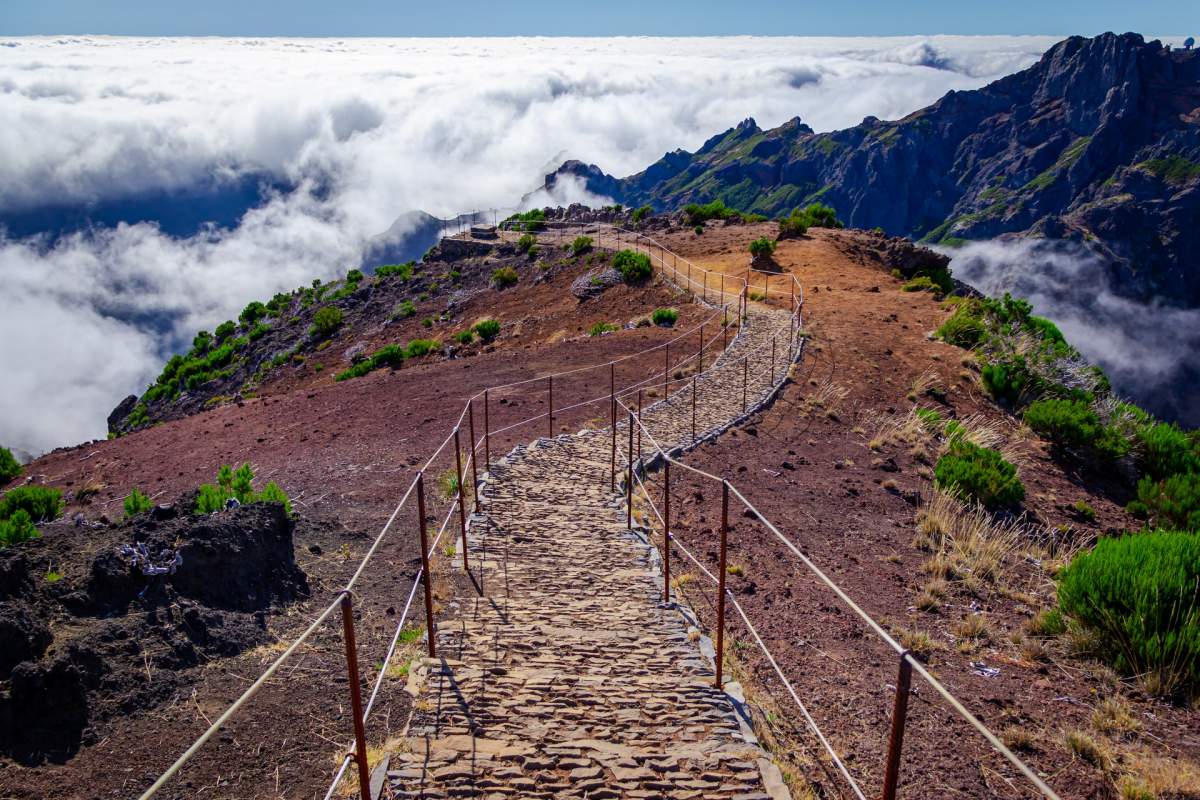
Visiting Madeira is a unique opportunity for hiking lovers to enjoy unforgettable walks. Indeed, the island has more than 60 marked routes offering optimal safety and varied difficulties, including those of Pico Ruivo.
With 1,862 meters, Pico Ruivo is the highest point on the island. Easy and safe, the Achada do Teixeira hike is a 5.6 kilometers round trip and is one of the most beautiful hikes in Madeira. Accessible to all, the trail offers impressive views of the surrounding area.
30. Porto Moniz Natural Swimming Pools
The natural pools of Porto Moniz are considered one of the main attractions of the island of Madeira, bordering the Atlantic Ocean.
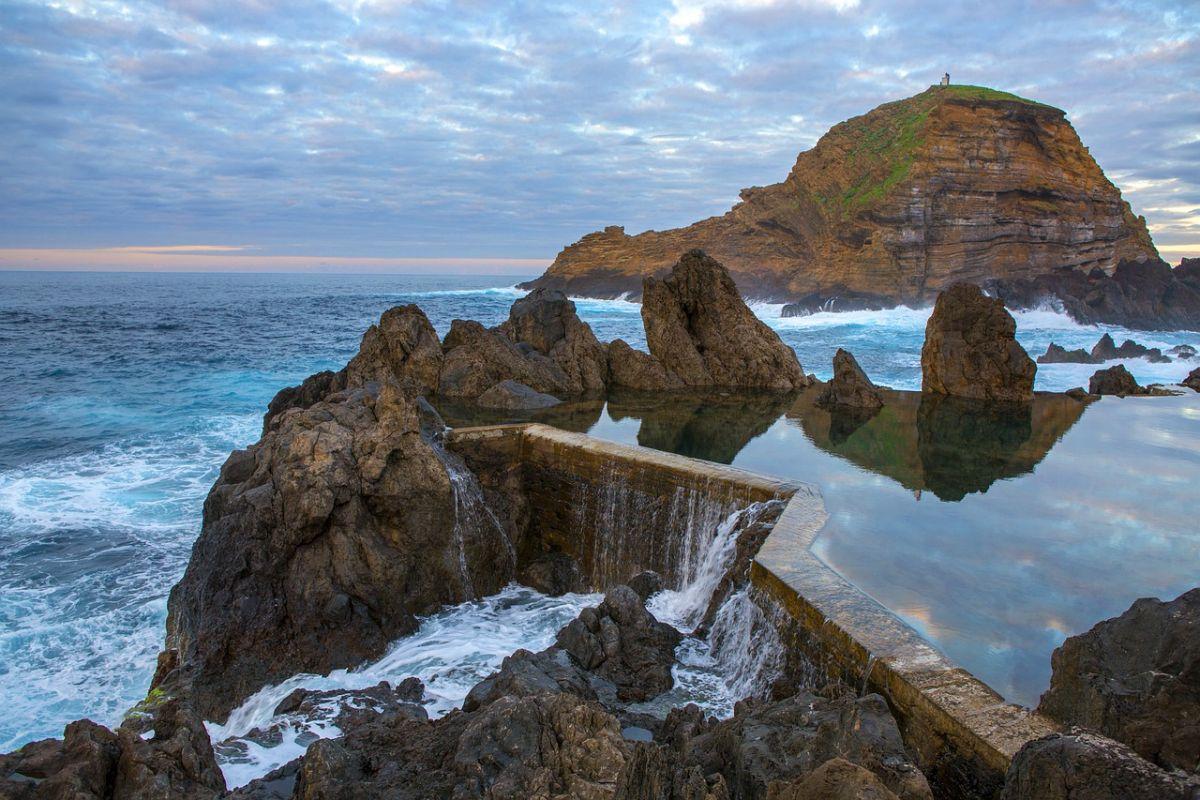
Volcanic lava formed the pools as a result of a 6,000-year-old eruption. Huge waves from the Atlantic Ocean constantly pound the basaltic stone basins, which naturally fill up at high tide and offer a spectacular setting. The water in these pools is naturally warmed by the sun and reaches an average of 20°C / 60°F (winter/summer average), making a swim a unique and enjoyable experience for people of all ages.
The main pools are the Piscinas Naturais do Porto Moniz, Aquario, Valhas, and Cachalote. The Piscinas Naturais do Porto Moniz is located in a large tourist complex easy to access and safe for small children. Definitely a must-do in Madeira!
More Portugal Famous Landmarks
Portugal has such a rich heritage it was hard to keep the list under 30! We’ve added 15 more popular landmarks you should visit if you’re around, breakdown by region.
Landmarks in the Lisbon Region
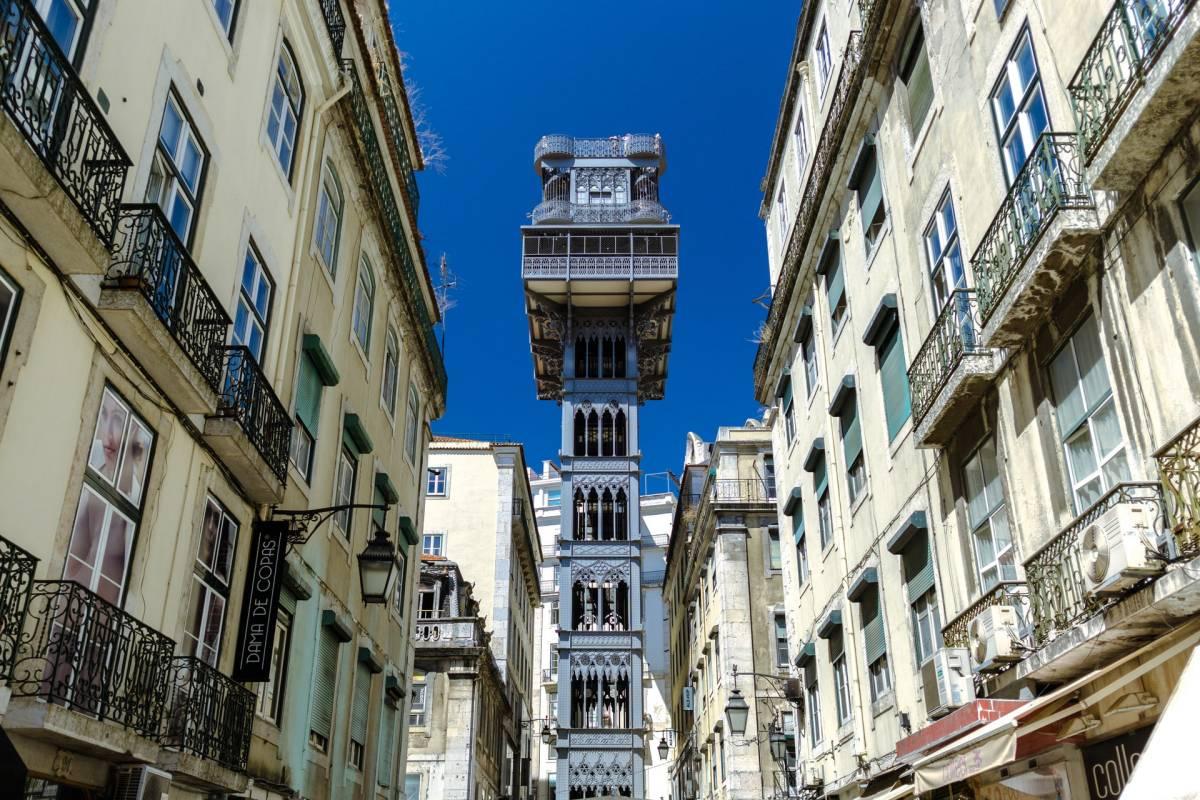
Santa Justa Lift
- Santa Justa Lift
- Monument to the Discoveries
- Praça do Comércio
- Carmo Convent
- Queluz National Palace
- Park and Palace of Monserrate
- Mafra National Palace
Landmarks in the Norte Region
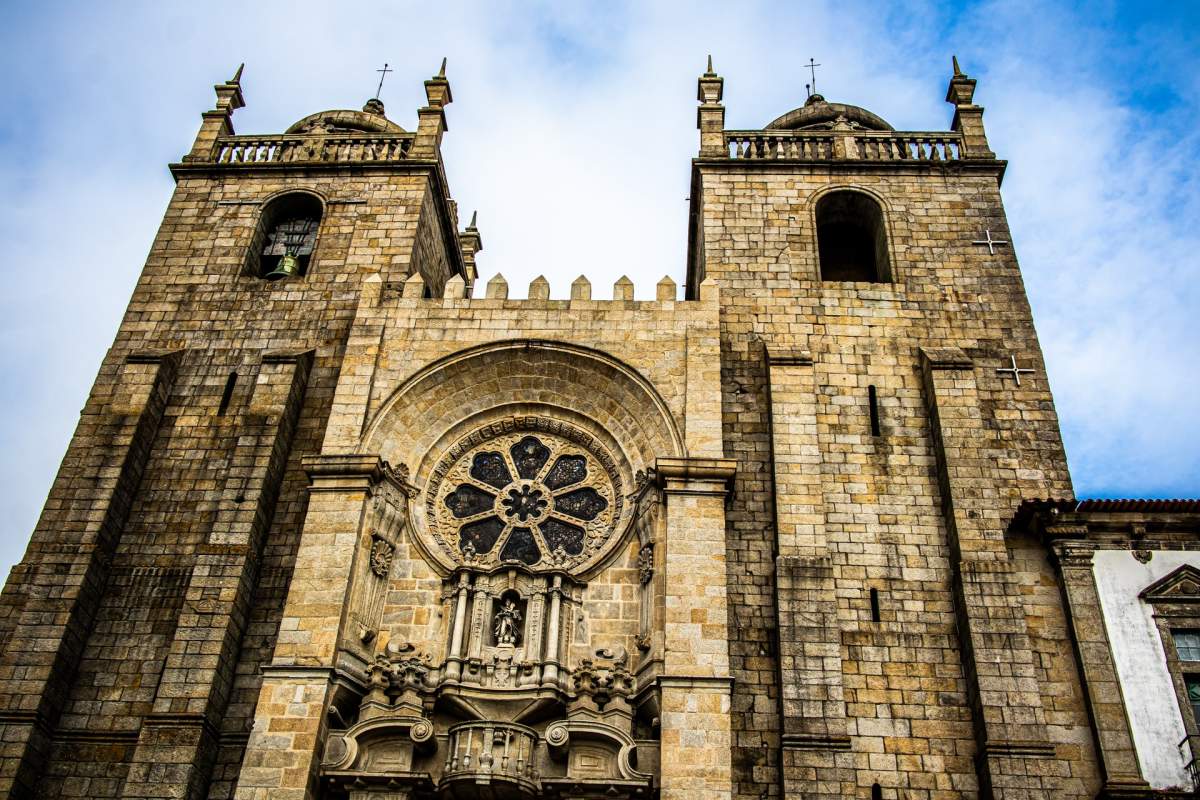
Porto Cathedral, also called the Sé
- Porto Cathedral
- São Bento Station
- Chapel of Souls
- Jardim do Morro
Landmarks in the Centro Region
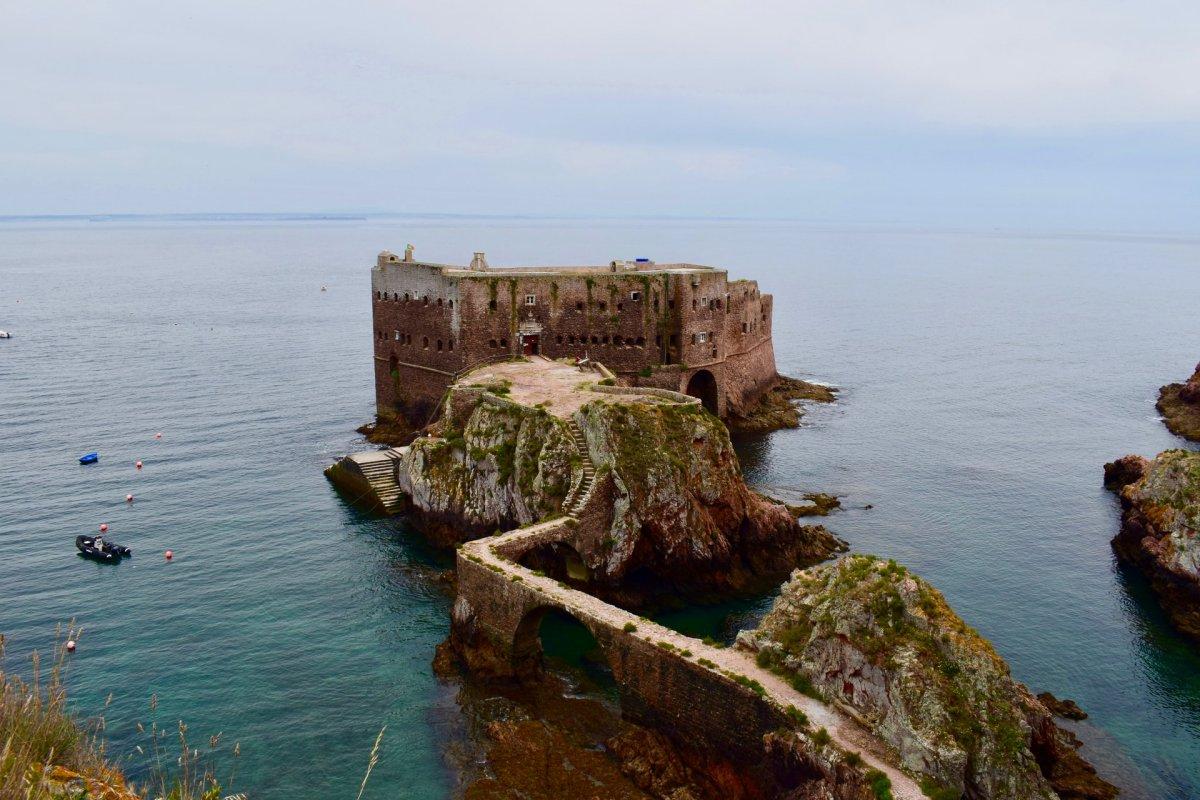
Fortress São João Baptista
- Fortress São João Baptista
- Alcobaça Monastery
- Nazaré Beach
- Batalha Monastery
Hooray! You’ve made it to the end of this list of Portugal famous landmarks! 🔥
But wait, I have one last bonus for you, right below.
Map of the Famous Landmarks of Portugal
To get the free map of the famous Portugal landmarks, simply click on the image below to open it in Google Maps. Then click on the “star” icon to save it to your own maps.
I hope you’ve found all the information you needed to make your Portugal bucket list through this post. Don’t hesitate to comment below if this is the case, I would be very pleased to read your feedback!
Loved this post? Share it with your friends by using the buttons below, I’m sure they’ll love it 🙂
Travel Tools
Use any of our recommended links below to book your trip. You pay the same, and we earn a small fee; a great way to support us!
Pin this to Pinterest!
Enjoyed this guide? Then help a fellow traveler and pin it! They'll most definitely love you for it, 100% guarantee.
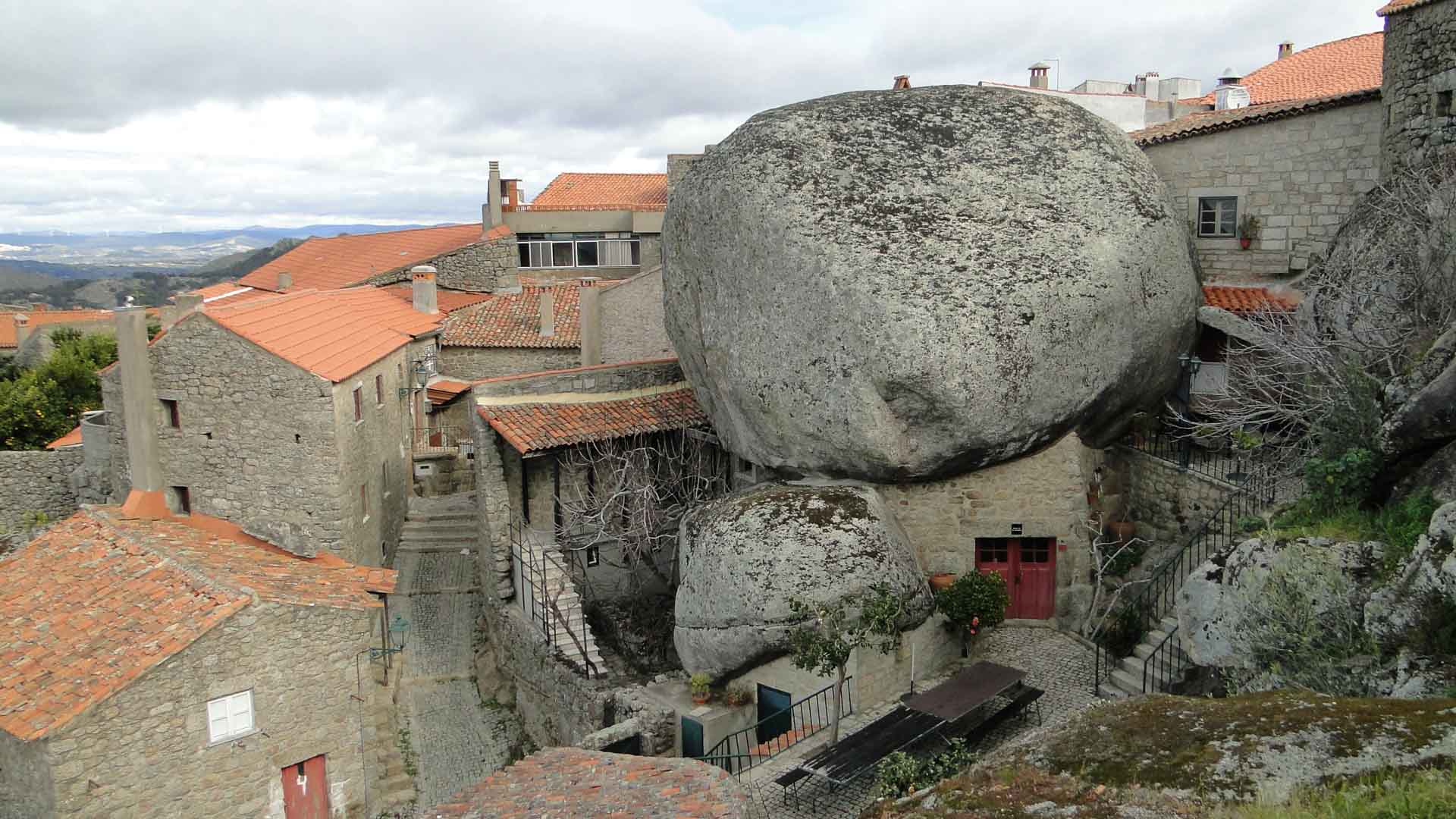
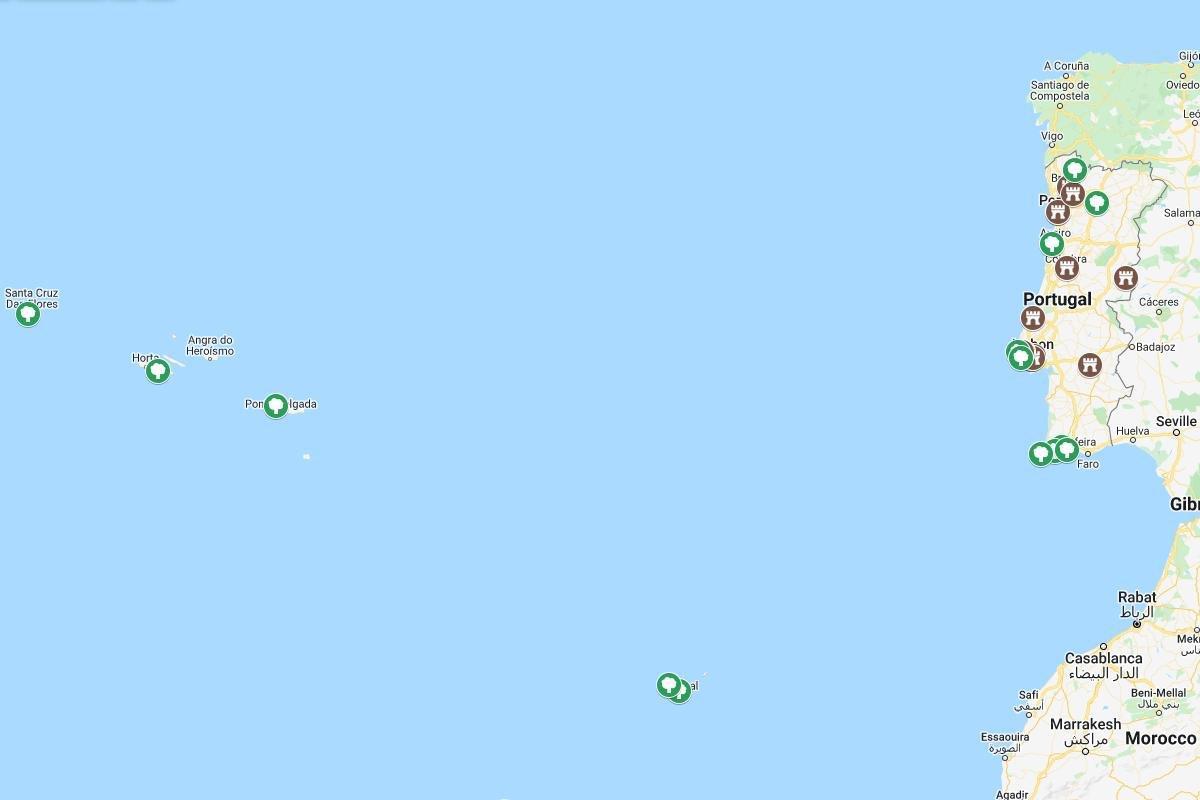
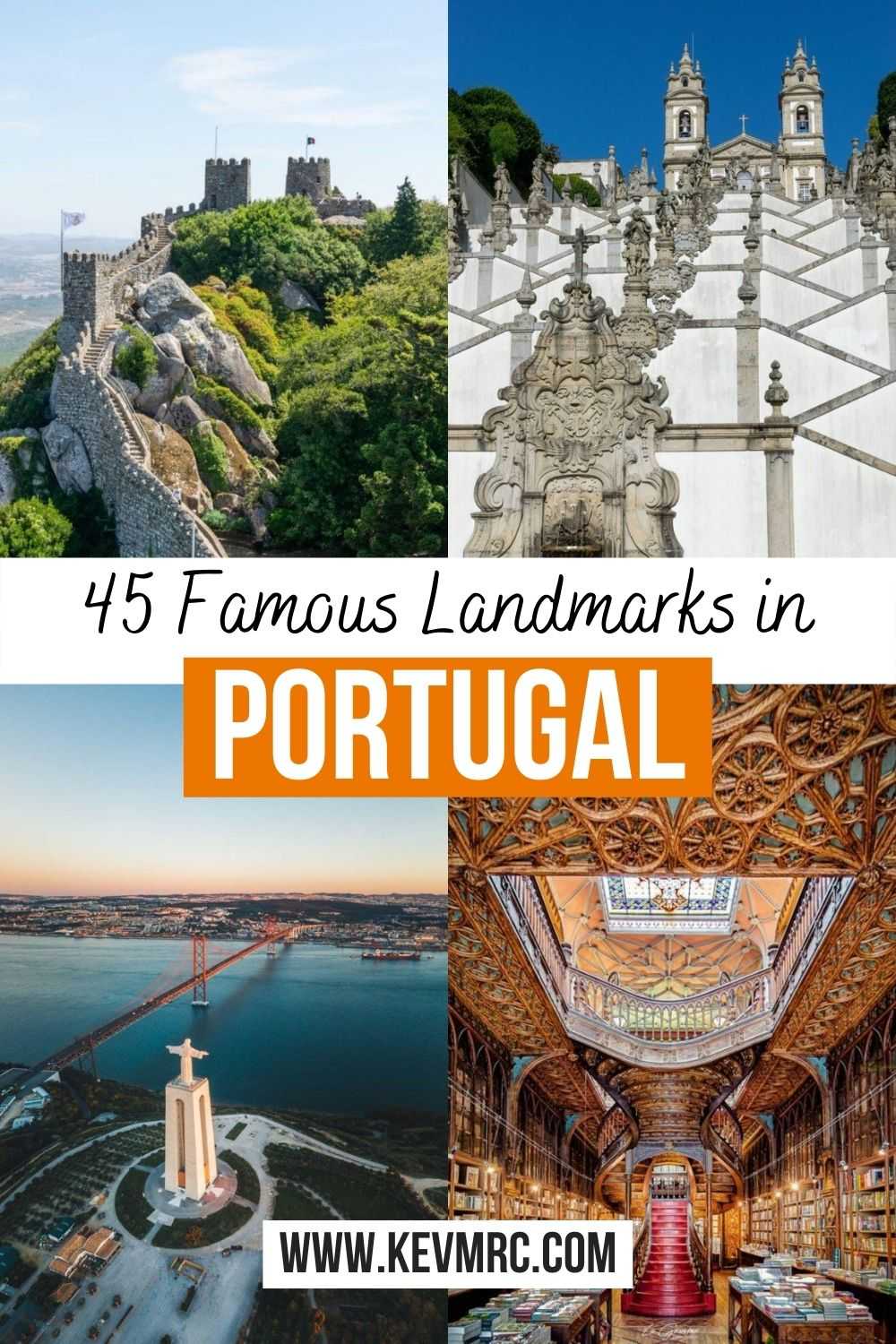

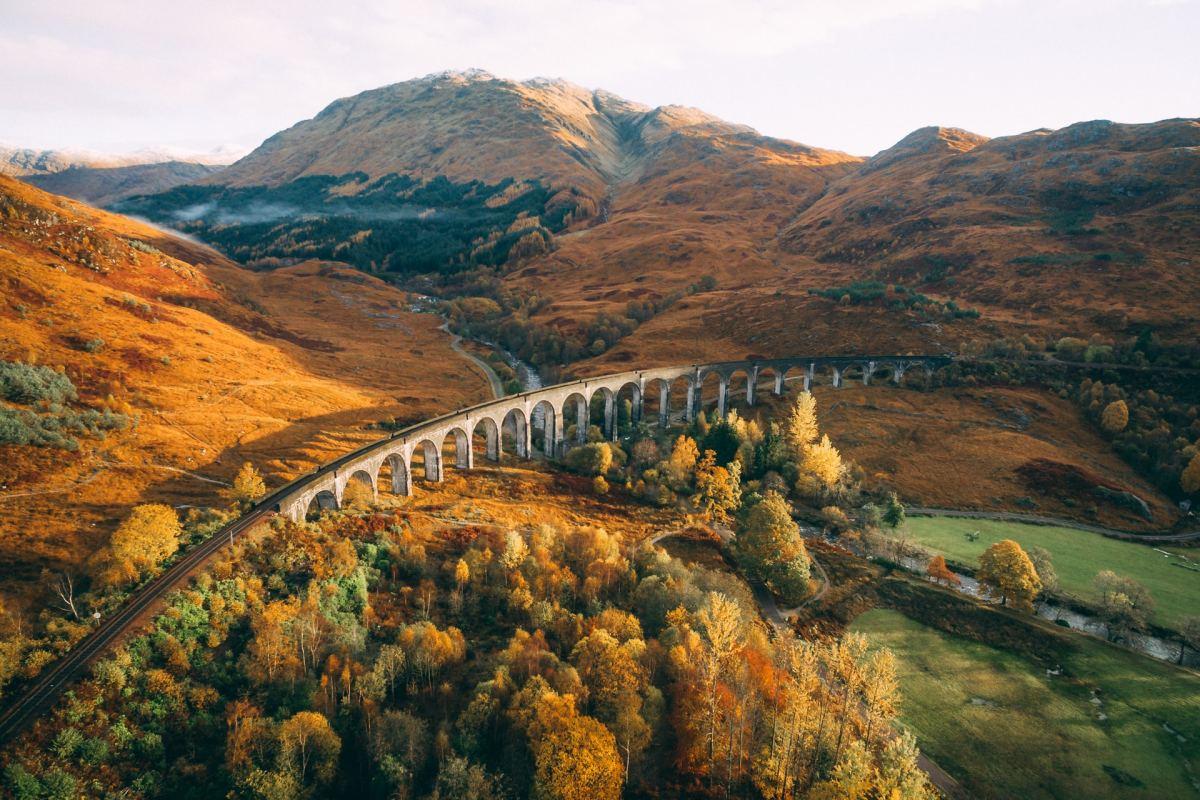
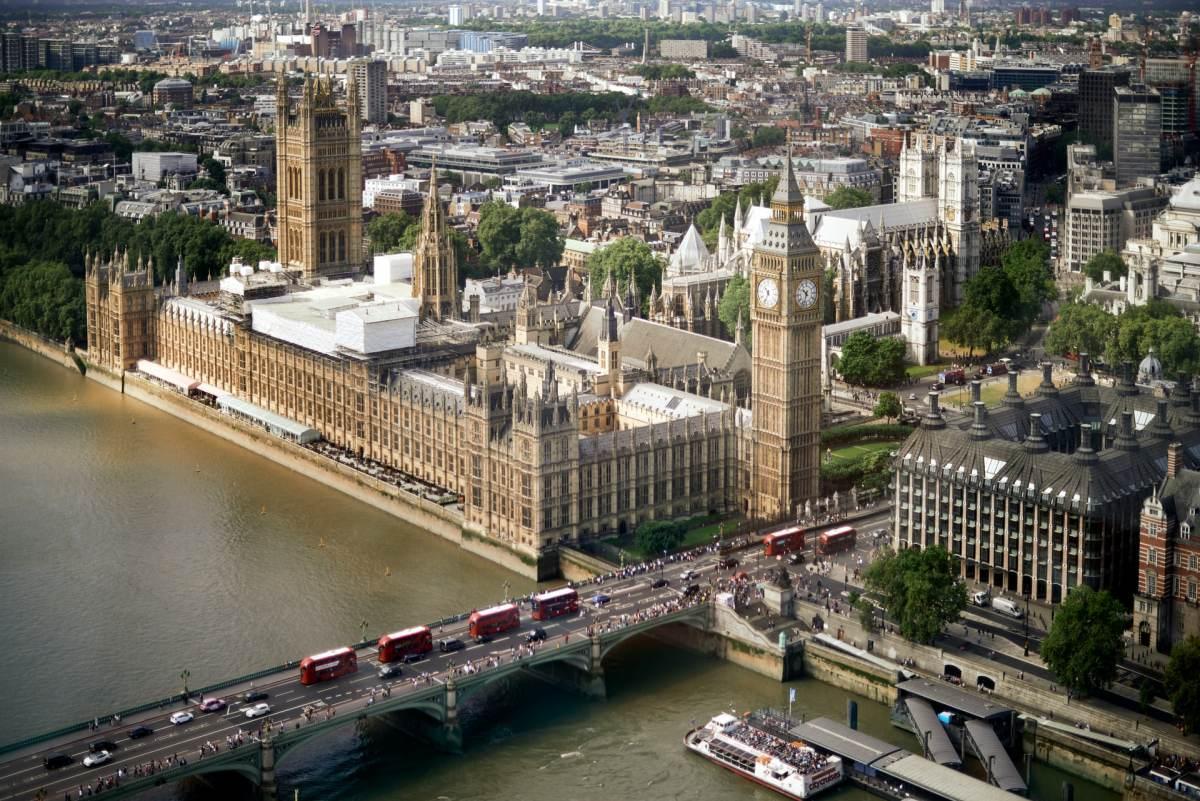

Perfect piece of work you have done, this site is really cool with superb info .